
Introduction
This article delves into the psychology of likeability, reviewing strategies to enhance engagement and foster better relationships. Drawing upon the latest research in social psychology, it explores how subconscious factors influence perceptions, the nuances of engaging in small talk, and the essence of a captivating presence. Discover how likeability can transform your personal and professional life.
The Psychology of Likeability
Understanding the essence of likeability can significantly alter our interactions both personally and professionally. Psychology unveils subconscious triggers that influence our perception of others. By grasping these mechanisms, we can refine our approachability and establish stronger bonds.
Subconscious Triggers
Our brains evaluate individuals based on subtle cues, such as body language and tone of voice. Maintaining eye contact, mirroring body movements, and displaying a warm, genuine smile are traits that foster trust and comfort. These actions shape our perceptions and increase likeability.
Mastering Small Talk
Engaging in seamless small talk is crucial for building rapport. Effective small talk hinges on active listening, asking open-ended questions, finding common ground, and using positive body language. These strategies foster trust and create meaningful connections.
The Power of Storytelling
Storytelling, a timeless art, has the remarkable ability to engage and persuade. By crafting compelling narratives, you can engage with your audience’s emotions, fostering a profound connection. Improve your storytelling by drawing from personal anecdotes, incorporating vivid imagery, and featuring relatable characters. This approach can transform a straightforward message into an indelible experience.
The capacity to develop and refine charisma and magnetic presence is a skill that evolves with practice. By integrating the subtleties of body language with the art of storytelling, you can unveil a level of charm and influence that will resonate with those around you.
“Charisma is not in the words you say, but in the way you say them.”
Unknown
| Charismatic Presence Techniques | Benefits |
| Mastering Body Language | Boosts likeability, trustworthiness, and approachability |
| Crafting Captivating Stories | Connects with the audience on an emotional level |
| Projecting Confidence and Composure | Inspires others to follow your lead |
Likeability in the Professional Realm
In the competitive arena of career advancement, the quality of professional likeability emerges as a crucial asset. It significantly enhances your ability to forge robust workplace relationships and cultivates a favourable professional image. This, in turn, paves the way for new opportunities and hastens your career progression. By refining your professional likeability, you can effortlessly manoeuvre through the corporate environment, thereby achieving your professional objectives with enhanced confidence.
Initiating the cultivation of professional likeability necessitates an understanding of its underlying psychological dynamics. It is the warmth, authenticity, and a sincere interest in others that naturally attract people. By sharpening your listening skills, maintaining a positive outlook, and offering sincere compliments, you can establish a compelling presence among your colleagues and superiors.
Another pivotal element of professional likeability is the mastery of small talk. Engaging in effortless, meaningful dialogue across diverse topics facilitates rapport building and leaves a memorable impact. Staying abreast of current events, industry trends, and shared interests equips you with conversation starters, enabling you to forge deeper connections with your peers.
Furthermore, cultivating charisma and a magnetic presence is vital for professional likeability. Attention to your non-verbal cues, the art of storytelling, and exuding confidence can create an aura of likeability that distinguishes you from others.
“Likeability is not a personality trait, but a skill that can be learned and honed over time. The more you invest in developing professional likeability, the greater the dividends you’ll reap in your career.”
Embracing the essence of professional likeability empowers you to navigate the workplace with heightened confidence, establish profound connections, and position yourself for sustained career success. Remember, the capacity to forge genuine connections is a skill of immense value, propelling you towards the pinnacle of your professional ambitions.
When Likeability in Leadership Backfires
While likeability is often seen as a key trait for effective leadership, it is unwise to select leaders solely on this basis, especially if it means neglecting other crucial predictors of leadership effectiveness, such as expertise, intelligence, and integrity. Here are three reasons why likeability in leadership can backfire:
- Likability May Mask Dark Side Traits: Perceptions of likeability can sometimes hide toxic traits. Individuals with narcissistic or psychopathic tendencies can appear charming and socially skilled, which might lead to their being mistakenly perceived as likeable.
- Mindless Conformity: Likeable leaders might encourage conformity rather than innovation. True leadership often requires challenging the status quo, which may not always align with being likeable.
- Results Over Popularity: Leaders overly focused on being liked may avoid making tough decisions. Effective leadership requires balancing likeability with the ability to make difficult choices and drive results.
Conclusion
Likeability is a powerful force that can transform personal and professional interactions. By understanding and leveraging the psychology of likeability, mastering small talk, and developing a charismatic presence, individuals can significantly enhance their influence and success.
Embracing likeability involves consistent practice and application in daily interactions. It is a skill that can be developed and refined over time, leading to more fulfilling relationships and greater professional achievements.
FAQ
What are the subconscious triggers that make people like me? Subconscious triggers include mirroring body language, maintaining eye contact, and expressing warmth through facial expressions and tone of voice. These actions significantly shape how others perceive you.
How can I improve my small talk skills? Key strategies include active listening, posing open-ended questions, sharing pertinent personal stories, and maintaining a positive, engaged attitude during conversations.
What are the secrets to projecting a charismatic presence? Projecting a charismatic presence involves mastering both verbal and non-verbal communication, such as confident posture, expressive hand gestures, and engaging storytelling.
How can I leverage likeability to enhance my professional success? Enhancing professional likeability involves active listening, offering sincere praise, fostering a positive work environment, and engaging in meaningful small talk.
What are the key benefits of developing greater likeability? Benefits include cultivating deeper relationships, expanding social and professional opportunities, and increasing influence and impact on those around you.
By mastering the art of likeability, individuals can unlock their full potential, becoming more respected, admired, and successful in their personal and professional lives.
More on Charisma
Introverts, extroverts and leadership with Karl Moore – Podcast
Dealing with Imposter Syndrome

Adapting accordingly
Evolutionary change has led chameleons to adjust their mindset and develop unique abilities over millions of years. Some of these unique skills include a talent to change their skin colour instantly in response to predators, to control each eye independently and alter their body shape to communicate with other lizard species. They possess a consistent competence to sense changes in their environment and adjust accordingly.

In our professional world, we know many types of changes can occur. From a people perspective, employees are often asked to be responsive to shifts in their environment, such as being asked to work three days in the office instead of zero days during COVID-19. They may also be tasked with winning a significant business opportunity, such as designing and presenting a presentation to a client. Or they may need to adapt to unexpected structural and strategic changes, such as two functions coming together as part of a merger.
Regardless of the scale of organisational change, people are ultimately at the centre.
Common goals
Change can be a complicated process involving deep rooted behaviours, internal politics, impending risks and numerous benefits. To navigate change effectively, it is critical that teams have support and opportunities to feedback.
From a strategic perspective, leaders should evaluate their engagement process to ensure there is active, timely and effective communication. They should ensure that their teams feel involved and that they actively listen to what their people are saying. As the single source of truth, it is the leadership team’s responsibility to truly understand the core impact(s) any professional change will have on their people before it occurs. By doing this effectively, it sets a tone and builds the foundations for long-term success.
How do leaders ensure that they understand their teams?
Pace, pace, lead
The ‘pace, pace, lead’ framework is a technique used in psychology and performance coaching that originates from Neuro-Linguistic Programming (NLP). Taught within Executive Coaching courses globally, it is an intentional process that helps build trust and gain momentum by establishing rapport with the person or group.
The first step, pace, involves mirroring behaviours, language or communication style to create a sense of familiarity and connection. The second step, also called pace, involves matching their behaviours while introducing new ideas or perspectives. The last step, lead, involves introducing new behaviours or suggestions, which are more likely to be accepted because of the previously established rapport.
The technique ‘pace, pace, lead’ refers to a deliberate process that moves forward at a measured pace. Although it’s not slow, the process can be perceived as gradual. This approach involves carefully building trust and momentum before ultimately leading towards change. This ensures that a clear understanding is established before change occurs.
Summary
During their evolution, chameleons have experienced many failures giving them the skills to learn, adapt and grow through experience. When it comes to small or large organisational change, experience tells us it is critical for leaders to understand their people. The level at which people feel engaged, through active listening, will either build or break trust.
Once a clear understanding is established, organisations, leaders and departments should work towards a common goal of aligning the culture with desired behaviours. Successful change happens when people are given the right environment to develop new skills and the autonomy to be accountable for their responsibilities.
This powerful combination of alignment, advancement, autonomy and accountability provides a genuine competitive advantage resulting in greater individual and collective performance and a significant return on investment.
More on Leadership Coaching
High Impact Leadership Development
More on Autonomy
“Empowering” Workers is More Than a Catchy Phrase
The Workplace Motivation Theory That Works
Organisational Psychology and Motivation

Introduction
According to PwC’s financial wellness survey of 2023, 60% of full-time employees are stressed about their finances. That figure is even worse than it was during the pandemic. The situation is so bad that 47% of employees earning $100,000 or more a year answered that they, too, were stressed about their finances [1].
44% of full-time employees say inflation has had a major or severe impact on their financial situation over the past year, 49% find it difficult to meet household expenses on time each month, and among employees carrying credit card balances, 44% say they struggle to make minimum payments on time each month [2].
The numbers are startling, and not just in the US. In Ireland, 81% of employees say they find money matters stressful [3].
It’s the paradox of money. It makes the world go round, is utterly pivotal to our ability to live with dignity, and yet it’s forever been a taboo. We should not talk about money. It’s poor etiquette socially – perhaps understandable – but even in our work environments the general consensus is that our employer gives us a salary, which every year or so we may renegotiate, but outside of that the topic should be avoided.
But to resuscitate financial health from its current flatline, that needs to change. Research commissioned by Bank of Ireland revealed that 88% of young people learn financial literacy and money management skills predominantly from their parents. Only 57% said they learned from teachers and 25% from online resources [4].
The disadvantages of that are obvious. If one’s parents – who likely were not given a financial education themselves – are not financially literate, their flaws will be passed down.
Ireland’s financial literacy score sits at 54%, well below neighbours and allies like the UK, Germany and Denmark. Troublingly, the 18-34 bracket scored lowest on financial literacy (48%), with over 65s scoring highest (58%) [5]. Sure, part of that boils down to life experience, but it also signals that this is an issue that is not going to resolve itself any time soon.
Cause for concern, too, is that women’s financial literacy scores were almost 10% lower than men, figures which are reflected internationally. A Swedish survey raised the issue of “stereotype threat”, meaning that as a result of women believing that their gender was worse at handling money, they in turn made worse financial decisions. The survey showed that amongst girls aged 13 to 15, financial literacy deteriorated as stereotype strength increased [6]. It takes active steps to reverse the trend.
Financial wellness programmes
Liz Davidson, Financial Finesse founder and CEO, says that, “Employee financial stress is at the greatest level it’s been since the Great Recession” [7].
She suggests the only way to combat this is for companies to adopt employer-sponsored financial wellness programmes. They’re no longer simply nice to have, she says. They’ve become an “imperative.”
The BrightPlan Wellness Survey of 2022 found that financial wellness programmes were now the number one most-wanted benefit among employees, more so than mental health initiatives or time-off programming [8].
And yet, a Transamerica Institute report found that while 77% of workers view financial wellness programmes as an important benefit, only 28% of employers offer them [9].
One positive is that the stigma around such programmes seems to be dampening. PwC notes that when it started its annual financial wellness survey in 2012, only 51% of workers whose employer offered financial wellness services had used them. By the 2023 survey that number had risen to 68% [10]. Just 33% of employees now find it embarrassing to ask for guidance or advice regarding their finances, compared with 42% in 2019 [11].
Among workers who have even attempted to estimate how much money they will need to save in order to retire, a recent report found that 45% simply “guessed” the amount and only 29% have a written plan for how to achieve it [12]. The situation can’t be fixed fast enough.
How to approach financial wellness programmes
Elements of financial education that companies should be focusing on include budget and savings planning, how to create attainable financial goals, property advice and mortgage options, retirement projections and planning, investment education and debt management [13].
Billy Hensley, CEO of The National Endowment for Financial Education (NEFE), argues that it is pivotal employers offer a “personal finance ecosystem” [14].
“Single, tactical solutions cannot work by themselves,” he says. “If it was just about more money or more education, we would’ve solved the problem already.”
The ecosystem approach means that rather than adopting a blanket approach for all employees, employers take the time to consider each of their employees’ unique circumstances – their financial knowledge, cultural influences, socioeconomic status, mindset, overall physical health, where they live etc. – and then tailor the advice accordingly.
Speaking to the Irish Times, Stephen McCormack, senior director and head of financial planning at WTW, agrees. “It can be far more beneficial for employers to provide one-to-one advice sessions with an external adviser to allow employees to discuss their personal situation, confidentially, to get to the core of their financial distress,” he says [15].
“This will enable them to identify the issues, put a plan in place, specific to their needs and objectives, and monitor the progress on an ongoing basis.”
TIAA’s financial wellness survey from 2022 found that employees who have participated in an employer financial wellness programme are twice as likely to have a high financial-wellness rating than those who are not offered the resources or do not participate [16].
54% or participants of such programmes were confident they would retire when they want, compared to 32% of nonparticipants. While 50% of participants were confident they will not run out of money, compared to 29% of nonparticipants [17].
The benefits for employees, then, are stark. But employers, too, gain massively from ensuring their staff are financially literate.
Employer benefits
According to a 2018 Financial Health Network Survey, almost three-quarters of workers with high financial stress said it distracts them at work [18].
56% of employees who suffer distraction at work due to financial stress say they spend three or more work hours a week dealing with or thinking about issues related to their personal finances [19].
A TIAA Institute and the Global Financial Literacy Excellence Center (GFLEC) report from 2023 found similar results, saying that employees spend an average of eight hours a week dealing with financial issues, with four of those hours occurring at work [20].
This level of stress and distraction costs employers money.
A 2023 study in the Journal of Financial Literacy and Wellbeing found that a well-designed financial education programme can remove at least one hour per week of worry and financial distress for each employee who participates in that programme [21]. Assuming a minimum wage of $15 per hour, at a company with 30 minimum-wage employees, a good programme can recover at least $22,500 of value per year [22].
“Organisations have every reason to want their employees to be financially aware. A well designed employee financial wellness programme can help employers reduce a key barrier to productivity and motivation in the workplace,” says McCormack [23].
Not only does keeping employees financially literate eliminate a key distraction and increase staff productivity, but it aids massively with retention.
Only 54% of employees who are financially stressed feel there is a promising future for them at their employer, compared to 69% of employees who are not stressed about their finances. Financially stressed employees are also twice as likely to be looking for a new job as their unstressed colleagues (36% versus 18%). And 73% of financially stressed employees say they would be attracted to another employer that cares more about their financial well-being [24].
The aforementioned Financial Health Network Survey from 2018 found that 60% of people said they’d be more likely to stay at a job if their employer offered financial-wellness benefits [25]. Such initiatives shouldn’t be viewed as “charity” from an employer standpoint, says Annamaria Lusardi, a senior fellow at the Stanford Institute for Economic Policy Research (SIEPR) and founder and academic director of GFLEC. Instead, they should view it as a way to “retain and attract workers and make them more financially healthy and productive” [26].
Employers are often reluctant to engage in such initiatives because they’re viewing these programmes purely through the lens of taking cash out the tin. But the return on investment is clear. On average, employee benefits cost employers between 30–40% of the average worker’s base salary [27]. It’s worth investing the time and money to make sure that cost is contributing to your business.
Moving forward
Money is an awkward subject. The adopted wisdom is that it’s best not to talk about it. We inherit certain financial skills from our parents and just have to hope that we’re lucky enough that that will prove sufficient. But it’s not. Employers have an obligation to ensure their staff are financially literate. That means teaching them about key areas in which they can make improvements, such as budget and savings planning, financial goals, property advice, retirement projections, investment education and debt management – and tailoring that advice according to each individual’s circumstances. Not only is it the right thing to do, but it offers benefits to the employer in terms of staff productivity and garnering company loyalty.
The stigma around money is shifting. It’s time for employers to play their part in helping the pendulum swing.
More on Employer Benefits
Addressing High Housing Costs in Ireland: Strategies for Employers
How Much Should You be Working?
References
[7] https://hbr.org/2024/01/its-time-to-prioritize-employees-financial-health?ab=HP-hero-featured-text-1
[12] https://hbr.org/2024/01/its-time-to-prioritize-employees-financial-health?ab=HP-hero-featured-text-1
[14] https://hbr.org/2024/01/its-time-to-prioritize-employees-financial-health?ab=HP-hero-featured-text-1
[20] https://hbr.org/2024/01/its-time-to-prioritize-employees-financial-health?ab=HP-hero-featured-text-1
[21] https://www.sciencedirect.com/science/article/pii/S0278425423000212
[22] https://hbr.org/2024/01/its-time-to-prioritize-employees-financial-health?ab=HP-hero-featured-text-1
[26] https://hbr.org/2024/01/its-time-to-prioritize-employees-financial-health?ab=HP-hero-featured-text-1
[27] https://hbr.org/2024/01/its-time-to-prioritize-employees-financial-health?ab=HP-hero-featured-text-1

Introduction
January is not only a reset of the calendar. For many of us, it is a reset of our goals and ambitions. We look back on what we achieved in the past year, what we want to achieve this year, and enter a period of reflection.
We evaluate our progress – professionally, personally – and in a flurry of excitement and/or existential panic, commit ourselves to the task of betterment. We scribble down goals for the year ahead. We’re going to learn French, and maybe Spanish too. We’re going to lose not just that Christmas weight but a further stone on top of it. We’re going to get the promotion, travel to that beach paradise, eat healthier, take more photos, and just generally, finally become the rich/pretty/happy/smart/loved/well-read version of ourselves we were always meant to be.
Until after about three days of pursuing this idealised final form, we collapse in a heap and decide Netflix and a takeaway sounds like a better idea.
Like Icarus, we flew too close to the sun, got burned, and crashed back to Earth before the New Year’s hangover had even fully evacuated our system. Because the problem with “New year, new me” is it can only ever be half-true.
Which isn’t to say we shouldn’t pursue new goals – we can always strive for more. Rather that we should do so intelligently. Setting objectives is not just doable but recommended. It helps keep us on track, steadies our progress, and offers clarity and motivation.
There’s a story educators often cite that backs this up.
Many years ago, a survey was taken of students in their senior year at Yale University. Researchers asked the students if they had any goals for their future, and if any of them had written these goals down. 3% had. The rest, in much more relatable fashion, had not. Twenty years later, the researchers tracked down this same group of students and found that the 3% who had written down their goals had out-achieved their peers who hadn’t done so financially and professionally, while also being happier and more self-confident [1].
Now, does this story demonstrate the undeniable power of writing down one’s goals and prove that if you wish to be successful that there is a sure-fire way to do so? No, because the story is almost certainly untrue. A low-rent parable that gets wheeled out by educators all the same because, like all tales that pass into folklore, the heart of its lie speaks to an accepted truth: setting goals leads to progress.
While that specific story may be false, studies have shown that appropriate goal setting, along with timely and specific feedback, can lead to higher achievement, better performance, a high level of self-efficacy, and self-regulation [2]. And yet, when asked “Were you taught how to set goals in school?” 85% of individuals responded “no” [3].
In other words, we believe in the power of setting goals, we just have no idea how to do it.
The courage to want
Writing in Forbes, Life Performance Coach Julien Fortuit notes that, “Fear is probably the most common impediment to goal setting, even though many people may not admit it. Fear of failure – that you’ll set a goal, but not be able to achieve it, and suffer embarrassment, shame and disappointment in the process – underlies so much foot-dragging about setting and achieving goals” [4].
Fortuit acknowledges, too, that oftentimes we don’t just fear failure, but success. Applying for that new job, promotion etc. is often accompanied by a sudden spike of dread: What if I actually get this? Will I be able to do it? What will it mean for my life? What if I don’t like it? Is this the right move? It suddenly seems so much easier to put our dreams back in our pocket and settle for what we have.
Some people even fear speaking their goals out loud, or fear admitting to having any in the first place – they deny themselves the evaluation required to know what it is that they want. Fortuit writes that, “Many people are afraid of setting goals “just” for themselves. They fall into a common mental trap of believing that the desire for attainment or advancement is inherently narcissistic, and that settling and being content where you are is somehow ideal” [5].
All these impediments are self-created: fear of failure, of success, of daring to dream in the first place. And while feeling these things may be totally normal, allowing them to stop you from pursuing a goal is foolhardy.
So, before setting out toward your goal, first examine yourself and decide what it is you really want – to work in a new sphere? A new country? To earn more money? To start your own business? Once you’ve taken the requisite time to self-analyse and understand where it is you want to be, only then can you take the first steps to getting there.
Enacting objectives
Regardless of the goal, the consensus is that if you wish to achieve it, you must make it SMART. Smart goals are Specific, Measurable, Achievable, Relevant, and Time-Bound.
Specificity is crucial. “I want to be a better employee” means nothing. “I want my sales record this year to improve by 15% compared with last year” is SMART. It is one clear objective, with a measurable area of improvement, a challenging but achievable target and a clear timeframe.
The primary issues that hold back goals are that the end desire is either too vague or too ambitious. Give yourself something tangible to focus on achieving – it doesn’t have to be an outcome, like the 15% example, rather a process. Say you want to spend 10 minutes a day studying a language rather than saying “I want to be fluent in Korean”, or “I want to run twice a week” rather than “I want to do a marathon.”
For goals that take place over a long period of time, it can be a good idea to set smaller objectives in between so that you can keep yourself on track. For example, if you want to read 30 books this year, it can be all too easy to fall behind early while convincing yourself that things will improve later in the year – that future you will pick up the slack. Except inevitably, as the first firework of December 31st fizzes into the sky, future you is left remonstrating past you for putting them under so much pressure and forcing them to end the year feeling like a failure.
A better approach would be to measure your progress by ensuring you’ve read ten by the end of April, twenty by the end of August etc. Not only does this make the goal more measurable and less daunting, but you get bursts of satisfaction through the year every time you see you’re on track.
Worth trying, too, is making your resolutions public. You will feel – rightly or wrongly – a level of scrutiny as to your progress. It is only human nature. Of course none of us want to feel like failures. But far more terrifying is the prospect of everyone else seeing us as one.
Additionally, ensure that you’ve connected a “why” to each of your ambitions. If our brain is able to link the efforts required to achieve this goal with a tangible, meaningful reward in the future, it is more likely to find the necessary motivation when things get tough. Wanting to hit sales targets so you can earn commission is fine. Wanting to hit sales targets so you can earn commission that you’re putting towards a deposit for a house for your family is better. Of course, it need not be so primal. Wanting to buy those new shoes, to feel more confident, to renew your season ticket or shop at the posh supermarket – whatever motivates you.
The benefits aren’t just in achieving goals but also in what having goals does to our psyche. A study amongst pulpwood producers in the southern United States showed that not only did productivity improve drastically amongst workers once goals were introduced, but that “within the week, employee attendance soared relative to attendance in those crews who were [not set goals]. Why? Because the psychological outcomes of setting and attaining high goals include enhanced task interest, pride in performance, a heightened sense of personal effectiveness, and, in most cases, many practical life benefits such as better jobs and higher pay” [7].
Habits
If you want to make long-term improvements, make habits your best friend.
James Clear’s Atomic Habits is the obvious guide for bringing habits into your life. He shows how micro-changes – getting 1% better every day – make all the difference. Habits take time to form, and there’s no shortcut to making them stick. It takes consistency, showing up every day. In order to do that, Clear suggests starting with a habit that is small and attainable. If you set yourself the target of running 10k three times a week, you may have a great first day, a great first week even, but sooner or later you’re going to struggle to keep it up (unless you’re built like The Hardest Geezer, in which case good for you). Clear’s advice for exercise isn’t about setting targets for runs or lifts, it’s about laying out your gym clothes before you go to bed or leaving your gym bag by the door. Truly the little things.
Writing in Harvard Business Review, Sabina Nawaz, a global CEO coach for a number of Fortune 500 corporations, says the same. “It usually takes my workshop participants between three and eight tries before they come up with something sufficiently small enough to be considered a micro habit.”
“When I tell them reading for an hour each night is too large, they then change to reading for 45 minutes, then 30 minutes, and so on. Finally, I tell them, “You will know you’ve truly reached the level of a micro habit, when you say, ‘That’s so ridiculously small, it’s not worth doing’”” [8].
It may sound ridiculous, condescending even, to say “start reading one page a night” or “start doing one pushup a day”, but building consistency is far more important than having an impressive week or month then falling off the wagon. That may mean sticking with your teeny-tiny habit longer than you’d like to, even if you think you’re capable of more. “You’ve stuck with your original micro habit long enough when you feel bored with it for at least two weeks in a row,” Nawaz says. “Then increase it only by about 10%.”
Effective goals
Every year, all over the world, people set themselves goals they have no chance of achieving. It’s a double negative – not only are they not fulfilling the goal, but they’re left feeling like failures because they fell short. To make effective goals, one must first self-evaluate and decide what you really want. You have to know where you’re going before figuring out how to get there. Once you’re set on the destination, in order to make your goals achievable, make sure they’re SMART, making use of habits, linked to a clear “why”, and focused on processes rather than just outcomes.
Resolutions don’t have to be distant dreams we’ll never achieve; they can be powerful motivators that set us on the path to success. So put last year’s missed targets behind you and set yourself goals you can actually reach and truly want to.
More on Goal Setting
How to Achieve Peak Performance
New Year’s Resolutions: How to Make Them Useful
More on Habits
Why Achievement Doesn’t Guarantee Happiness
Boosting personal and organisational performance in the digital age (Podcast)
References
[2] https://www.jstor.org/stable/41684067?read-now=1#page_scan_tab_contents
[3] https://www.jstor.org/stable/41684067?read-now=1#page_scan_tab_contents
[6] https://www.jstor.org/stable/4166132?read-now=1#page_scan_tab_contents
[7] https://hbr.org/2020/01/to-achieve-big-goals-start-with-small-habits
[8] https://hbr.org/2020/01/to-achieve-big-goals-start-with-small-habits

Introduction
Survivorship bias is a subtle yet pervasive cognitive oversight that significantly impacts our understanding of success and failure. Often going unnoticed, it affects various areas, from entrepreneurial ventures and the entertainment industry to our everyday decisions and scientific research methodologies.
This bias emerges from an emphasis on the winners—those who have surmounted the odds—while inadvertently neglecting those who did not achieve the same success. Success stories are highlighted and celebrated, leading to a skewed perception that such outcomes are more common than they are. Conversely, the experiences of those who fail are frequently overlooked, leaving a gap in the narrative of what truly contributes to achievement or failure.
In business, for instance, we hear about the few start-ups that evolve into tech giants but seldom about the many that don’t survive their early years. The spotlight shines on celebrities and star performers in entertainment while numerous struggling artists remain unseen. This selective visibility can mislead aspiring individuals about the realities and challenges of success.
Recognising survivorship bias is crucial for a more accurate and balanced understanding of the factors leading to success. It encourages a comprehensive analysis of both successful and unsuccessful cases, promoting a more realistic approach to the probabilities and potential outcomes in any field.
Survivorship Bias: The Hidden Half of Success Stories
Survivorship bias casts a long shadow over our collective narrative, favouring stories of victory. The media celebrates tales of success, featuring business leaders, cultural icons, and renowned authors. This prominence of success stories overshadows the numerous trials and errors that either lead to victory or result in obscurity. Such selective storytelling creates a skewed reality where only victors command attention, while the majority who don’t reach such heights are forgotten.
In technological innovation, for example, the few smartphone models that dominate the market and public consciousness overshadow the numerous attempts that failed to find a market or fell short on functionality. We frequently celebrate the end products of innovation, from ground-breaking apps to transformative gadgets, while neglecting the graveyard of ideas and prototypes that did not survive the market’s rigours.
In sports, every champion on a podium represents the peak of a vast pyramid of athletes who trained with fervour and dedication but did not reach the summit of elite recognition. The winners’ spotlight often ignores the dedication and sacrifice of those who compete valiantly yet do not secure the medals and accolades.
In “Fooled By Randomness,” Nassim Nicholas Taleb illustrates how our understanding is limited by what we see, causing us to neglect the fuller picture that includes the ‘invisible’ majority contributing to the narrative of progress and competition without acknowledgement. In science, for every celebrated discovery published in journals, there are numerous unreported experiments and hypotheses that were essential stepping stones despite not achieving the desired result. These instances are critical to advancing knowledge, yet they remain unrecognised.
These examples give us a clearer picture of survivorship bias and its pervasive impact across various sectors. They remind us that what is celebrated and visible is just the tip of the iceberg, with much remaining unseen beneath the surface of success.
The allure of visible success, such as the glamorised lives of movie stars, success stories of YouTube personalities, and triumphs of Twitch streamers, fosters a false optimism. This disparity between visible successes and the invisible majority creates a misleading perception that fame and fortune are more attainable than they are. As media consumers, we often receive a distorted image of reality, where the pinnacle of success seems within reach for all.
However, the reality is much more sobering. Many businesses do not survive their initial years, most actors and artists grapple with financial instability, and many digital content creators never attain a liveable income from their efforts. By recognising the prevalence of survivorship bias, we can make more informed decisions, avoiding the trap of chasing an illusory model of success. An awareness of the numerous untold stories of struggle and perseverance grants us a more balanced understanding and fosters empathy for those enduring the brunt of their unpublicised defeats.
Survivorship bias significantly affects how we perceive and strive for success. By acknowledging this bias, we can temper our expectations and decisions with a healthy dose of reality, leading to a more nuanced approach to our ambitions. Appreciating the full landscape of success and failure is crucial, recognising that for every story of triumph, countless others go unheard yet equally deserve our attention and respect.
Survivorship Bias: Unveiling the Unseen in History and Decision-Making
The concept of survivorship bias finds profound lessons in history and contemporary settings alike, demonstrating its impact on our interpretations and decision-making processes.
One of the most instructive case studies comes from WWII, where mathematician Abraham Wald was tasked with better armouring American bombers. The common approach was reinforcing the areas with the most damage on returning planes. However, Wald’s counterintuitive insight was to bolster the undamaged areas instead, understanding that planes hit in those areas were not returning and thus were not represented in the data. This critical perspective shift exemplifies the essence of survivorship bias: the danger of only considering the immediately visible evidence while ignoring what we cannot see.
In the realm of consumer feedback, online reviews often present a distorted view of reality. Products and books, for example, typically garner reviews from the most passionate consumers—either extremely satisfied or dissatisfied customers—while the moderate and perhaps more common experiences go unreported. This distortion can significantly skew our perception of a product’s quality or a book’s merit, leading to an imbalanced view that does not reflect the true diversity of customer experiences. It underscores the importance of seeking comprehensive information that includes the silent majority of experiences to arrive at a more accurate evaluation.
The influence of survivorship bias extends into the professional world as well, particularly in how careers and businesses are portrayed in the media. For every actor who gains stardom or every CEO who catapults a start-up to international success, there are countless individuals whose efforts do not result in such widely recognised achievements. Though often overlooked, their stories are integral to the fabric of industries and economies. This bias leads to a disproportionate emphasis on extraordinary success stories, while the more common but less sensational experiences of striving and often not succeeding are neglected. This can create unrealistic expectations for those entering the workforce or launching new ventures, as they may not be fully aware of the high frequency of unpublicised setbacks inherent in these journeys.
By understanding the nuances of survivorship bias through these case studies, we can better appreciate the full scope of experiences behind our world’s successes and failures. Acknowledging the entirety of this spectrum is crucial for making more informed decisions, whether in historical analysis, consumer behaviour, or pursuing careers and building businesses. The unheralded stories—the majority that do not find their way into the limelight—offer perhaps the most authentic and instructive insights for those willing to look beyond the surface.
Combatting Survivorship Bias
In navigating the waters of success and failure, a more grounded approach requires the deliberate search for a wider range of narratives, including those that detail unsuccessful ventures. Such stories are often untold but offer critical insights into the realistic probabilities of achieving success. To foster a more balanced viewpoint, one should actively engage in pursuits with the understanding that failure is not a definitive end but a potential source of invaluable lessons. This mindset allows for a sustainable approach to risk-taking, where even the losses are accounted for as part of the learning curve, thereby informing future decisions.
Reflecting on the wisdom taken from Abraham Wald’s approach during WWII, our assessments must expand to include the factors that are not immediately apparent—the unseen efforts and unreported trials. A comprehensive understanding of a situation often lies beyond the visible successes in the quiet persistence and unnoticed trials that do not reach the forefront of public consciousness.
Equally important is the analysis of base rates, which are the statistical probabilities of success within any given domain. Such data offers a sobering counterbalance to the often anecdotal success stories, grounding our expectations and goals in reality rather than the exception.
Lastly, the allure of outliers—those remarkable tales of success against formidable odds—while inspiring can also lead to a skewed perception of reality. Recognising that these are the exceptions rather than the norm is crucial in maintaining a realistic approach to our aspirations. Through a conscientious recognition of the full gamut of experiences and outcomes, one can avoid the pitfalls of survivorship bias and make more informed decisions in the face of uncertainty.
In sum, we can approach our endeavours with well-informed and grounded wisdom by seeking out the full spectrum of stories, embracing the instructive nature of setbacks, considering the unseen and the unreported, analysing real-world probabilities, and resisting the misleading charm of exceptional success.
Conclusion
Survivorship bias significantly influences our view of the world. By recognising and accounting for this bias, we can approach our goals, dreams, and decisions with a more grounded and realistic perspective. This awareness enhances our capacity for informed decision-making in our personal and professional lives and challenges us to re-evaluate our assumptions and look beyond the surface of success stories.
More on Bias
Refining Performance Assessments: Reducing Recency Bias for Superior Evaluations
Mastering Decisions: The Strategic Edge of Red Teaming in a Biased World
Charlie Munger’s Mind Games: How Psychology Drives Business Success

Introduction
Born in Kildare in 1932, Charles Handy is an Irish author who specialises in Organisational Behaviour and Management. In 1994 he wrote a book called “The Age of Paradox”. In chapter 3 entitled ‘The Road to Davy’s Bar’, he tells a short story about asking for directions to a bar in Wicklow Mountain. He connects this story to performance in any context and two s-shaped sigmoid curves. Generally, a sigmoid curve has 4 points: inception, growth, maturity, and decline.
It’s interesting to note that one of the most debated chapters in executive education classes around the world is the concept of “what got you here won’t get you there”. This simple but powerful idea, as argued by Handy, suggests that while building the first curve of success, it’s important to start thinking about the second curve. If you stick to the same old path, you might miss out on the road to the future. It’s a thought-provoking concept that challenges us to think beyond our current circumstances and envision a better future.
The 2nd s-curve begins somewhere between the growth and maturity phases of our life, business or industry. It is important to innovate with new success factors before experiencing a decline in growth.

The Christmas and holiday season offers a great chance to break free from the everyday routine of life. It’s an opportunity to spend more quality time with friends and family and take a break from weekly project huddles or work commitments, allowing us to recharge our mental and physical batteries.
Regardless of how you spend this time, it is an important period for refreshing our minds, assessing the opportunities available to us, and planning how we can achieve our full potential.
More on New Year Preparation
Assessing Your Year’s Progress
New Year’s Resolutions: How to Make Them Useful

Introduction
It’s that time of year where history’s most famous CEO steps up to deliver on his annual project. Santa Claus is a cultural behemoth. Hardly a soul on Earth is unaware of his specific approach to leadership, replete with elves, reindeer, sleighs and coal.
But is Santa a good leader? Where does he impress and where could he improve? In what areas can we learn from Santa and in what areas could he perhaps do with updating his approach?
Santa delivers
The primary positive of Santa’s leadership, one that many a budding CEO could learn from, is that he sets clear goals and always hits his deadline.
Every year, Santa has the job of delivering presents to every child in the world. And every year, he does it. Now, there may be questions regarding his timing. It would appear that Santa suffers from the same tendency to leave his major tasks to the last minute as many of us. He has a whole year to deliver on his project and yet, without fail, does not get around to distribution until Christmas Eve.
That said, Santa never misses a deadline. Every Christmas morning, children the world over awaken to their new presents under the tree. The truth is that some of us thrive under the pressure of an impending deadline. One might have thought that after centuries of the same deliverable, Santa would learn his lesson and get his act together, delivering methodically throughout the year rather than needing to unload everything in one final dump. However, it would appear that no matter how many times he’s done it, Santa needs to feel that extra spike of pressure as the deadline looms ever closer in order to get the job done. It’s a trait that for many of us is a little too relatable.
Santa gets stuck in
Too often CEOs are happy to let their team do all the work, only to step in and take the credit when all is done (or point the finger of blame if things go wrong). While Santa is guilty of letting his elves undertake the brunt of the work through the year (arguably just the result of good delegation), when it comes time to deliver, Santa is there front and centre, riding the sleigh and taking responsibility. He could no doubt entrust one of the elves with this responsibility or even outsource the task to a third-party operation – I’m sure Tony McKCoy, Lewis Hamilton or any other famed steerer of steed or cart would love the opportunity – but no. Santa is there, getting his hands dirty when it matters most.
That said, Santa’s decision to lead the line on delivery night does speak to one of his baser traits: taking all the credit.
As noted, the elves are slaving away all year to ensure everything is in order for the big man to push things over the line on the day. But who is it that gets all the focus? Santa, of course. The media pour their attention on him in large part due to his clever branding (red suit, large beard, an air of eccentricity). But would it kill him once in a while to acknowledge the role his elves and reindeer play in providing a platform for his success? Seemingly, a touch of humility is too much to ask; he’d rather bask in all the glory without giving credit to his team.
Good leaders know that they are only as good as their team and that acknowledging their staff’s hard work goes a long way.
Clear communication
As well as consistently hitting his deadline, Santa is always crystal clear on his brief, both to staff and the wider public. His staff know that their role is to deliver presents to every child in the world by Christmas Day. Children know that he’s making a list and checking it twice, and that good behaviour will land them on the nice list, while naughty behaviour…well, it doesn’t bear thinking about.
Of course, critics could well point to Santa’s naughty and nice list as an example of poor leadership, attempting to incentivise through fear. Placing a lump of coal in the stocking of children he deems unworthy certainly feels draconian by modern standards. That said, his strongman leadership tends to yield results, with far more nice kids than naughty and very little coal doled out in earnest.
A loyal workforce
Despite not dispersing credit as generously as he could, Santa has cultivated a loyal workforce. His elves and reindeer seem to stick with him, with very little turnover of staff. That suggests that Santa has made Lapland an enjoyable place to work, probably with an enviable work-life balance, decent salary progression and maybe even a ping pong table.
However, it must be noted that there’s very little room for growth within Santa’s organisation. He’s the top dog and everyone under him seems to be working in a fixed position, with no higher rung of the ladder they can climb to by playing their cards right. Perhaps should he one day choose to retire, we may witness a Succession-esque bid for power from a series of his most ruthless elves, but for now the ceiling for career progression in Lapland seems low and unbending.
Lack of diversity
The one obvious example of a promotion in Santa’s operation is Rudolph (the red nosed reindeer, for those in doubt). However, his upgrading to the front of the sleigh seems if anything to be the exception that proves the rule, and ultimately to highlight another of Santa’s managerial deficiencies: a lack of diversity.
Prior to his do-or-die promotion, reports indicate that Rudolph was brutally mocked for the colour and glowiness of his nose. It would appear that Santa has cultivated a toxic work environment with a lack of diversity in personnel and thought. After all, the bulk of the legwork is conducted solely by elves. Perhaps by opening up to other creatures – goblins, ghouls, influencers etc. – we might see a greater plurality of thought amongst Santa’s workforce, rather than the hegemonic current state of play.
Innovation
Santa has shown a willingness to embrace modernity in his gift-giving, always up to speed with modern trends. That spirit of innovation, though, is seriously lacking when it comes to his process.
As any good business knows, innovation is about more than just product and output, it’s about the process by which outcomes are achieved. How can we streamline our operation so as to ensure maximum productivity and staff satisfaction?
Santa’s methods of delivery have served him well, and there is an argument to be made that if it ain’t broke, don’t fix it. That said, perhaps, in a changing world, there is a more operationally efficient way to achieve his goals than flying a sleigh through the sky at night with nothing but a glowing nose for guidance and likely no seatbelts. Not to mention the physical strain he places on his reindeer, who are probably only one trip to PETA away from putting an end to this operation for good. Even tried and tested methods need updating every once in a while.
Accountability
As previously noted, Santa is more than happy to accept plaudits for the operation without sufficiently doling out credit to his staff. But when things go wrong, where is he?
By which I mean, when I was ten years-old, all I wanted for Christmas was the new David Bowie album. And yet, when Christmas Day came around, it was starkly lacking. In its place was a jumper and a book. While these days a jumper and book would be my ideal gifts, back then such presents bordered on a declaration of war.
And yet, when I wanted to raise my concerns with Santa regarding his dismissive attitude to the carefully curated wish list I sent him prior to the big day, he was unreachable. Good leaders are accountable for the good and bad of their operation. In this regard, Santa falls short, and ten year-old me is yet to forgive him.
In summary
If you’re running a global delivery service built on the backs of what arguably constitutes slave labour (here’s looking at you, Jeff Bezos), then Santa is and forever will be the model to follow. However, for a normal CEO, more humility, accountability, championing of diversity, and coal-free incentivisation methods may be required.

Introduction
The year is drawing to a close. Christmas lights line the façades of urban architecture while the dulcet tones of Mariah Carey and slurred poetry of the late, great Shane MacGowan offer a familiar festive soundtrack. It’s a time for reflection, personal and professional.
As we reflect, we can’t help but be caught up in questions as to how our year has gone – have we achieved everything we set out to? Where did we shine? Where did we fall short? How can we know if we’re progressing?
Self-evaluation
As with all self-reflection, such questions are difficult to answer objectively. Still, it’s worth taking the time to assess your year as measuredly as you are able to. Coach Harriet Minter says that conducting your own end of year review is only useful if you can walk the line between self-castigation and self-congratulation [1].
Of course, if you set goals at the turn of the previous year, your results will be easier to measure. You can roll through your objectives and see which you achieved. For those you didn’t, ask why, though not in a punitive sense. Rather, look at the aim and assess whether there is something you can do next year to ensure you reach this target or whether fulfilling it was actually out of your control.
It’s perfectly possible that your goals changed throughout the year and so by December you were no longer pursuing certain aims. As John Maynard Keynes said, “When the facts change, I change my mind” [2]. It’s useful to remember when setting goals that we need not be slaves to them throughout the year. Life and work are at the mercy of constant fluctuations and external shifts. There is nothing to be gained by remaining fixed on a target that has lost its relevance.
If you struggle with self-assessment – either finding yourself too generous or too harsh in your appraisal – Minter suggests you picture a great boss and try to think what they would say [3]. Good leaders tend to know how to motivate their employees and celebrate their strengths while also providing constructive feedback as to how they can improve going forwards. Mimic that and you’re halfway there.
Measuring progress, not achievements
In The Desire Map: A Guide to Creating Goals with Soul, author Danielle LaPorte says that we set ourselves goals in order to achieve a feeling we want [4]. For example, if we seek a promotion, as well as the fiscal benefits it affords, we are also hoping to achieve a feeling of pride that our work is being recognised. When assessing our end-of-year achievements, it’s important to focus on the latter as much as the former. Perhaps you did not get the promotion, the pay rise, the new office, but did you get the feeling that you are making progress? Did you make steps in the right direction? This, in itself, can be worth celebrating.
That’s not to say one should simply accept being overlooked, especially if you’re quite certain that your efforts and achievements throughout the year are deserving of more respect than they’ve been shown. If that’s the case, vocalise it (in a courteous, professional manner, of course, open to hearing why your employer potentially disagrees).
But for the years in which you outwardly achieve little, have none of the obvious markers of progress to show for your efforts, it’s still worth giving yourself credit for effort and achievement. That can sound condescending, of course, like draping a participation medal around your own neck, but it is valuable. We all have years that don’t quite go our way. It could be a matter of timing, we could be part of a team that doesn’t suit us, we could be dealing with something in our personal life that bleeds into our work performance – these things happen. So long as you can look back at your performance and say, “Well, I gave it all I could, but this time things didn’t go my way”, that’s enough.
If you conclude that, in fact, you didn’t give your all, it might be worth asking why not and what steps you can take next year to improve.
External analysis
Sometimes the end of the year brings about not just self-analysis but external evaluation too. Some companies choose to do this at the end of the fiscal year, others the end of the calendar year, others around employee contracts. Regardless, performance reviews can be nerve wracking for even the best of employees. Often they are seen as something to survive, with employees and employers alike thinking “how can I get through this?” for another year, rather than viewing them as the opportunities for growth they can be if handled properly.
A 2018 McKinsey survey found that the majority of CEOs don’t find the appraisal process in their companies helpful when it comes to identifying top performers, while more than half of employees don’t believe that their managers get performance degrees right [5]. Similarly, a Gallup study found that only one in five employees agree that their company’s performance practices motivate them [6].
The lack of benefits performance reviews generally afford paired with the anxiety they tend to foster could suggest that the practice is overdue a place on the scrap pile. But amongst firms who tried to rid themselves of such measures, a separate McKinsey study found that when “organisations scrapped the performance ratings, they found a need for a form of annual documented administrative evaluation to make employment decisions, such as promotions and raises. To address this need, these organisations often implemented ‘ghost’ ratings—a system of evaluation that is, ultimately, just another annual performance rating” [7].
Essentially, then, the question isn’t “should we get rid of performance reviews?” Rather, it’s “how can we make them more effective, for employer and employee alike?”
Making the most of performance reviews
Writing in Forbes, Chris Lee, President of Ventureblick, says that in his experience employees spend too much time in performance reviews bragging about their achievements and strengths. Instead of embarking on a self-promotion sales initiative, he recommends employees list what they consider to be their weaknesses as well as offering proactive proposals for areas of development.
“The trick here,” he writes, “is that you are setting yourself up to demonstrate your self-awareness and readiness for further career advancement” [8]. In practice, that means that rather than saying, “I deserve to be given a leadership position for X, Y and Z,” you say, “I have developed strong project management skills in the past years, but I’m still lacking people management experience. I’d like to develop this facet and lead a small team.”
Taking this approach shows a level of self-awareness, proves you acknowledge your weaknesses (rather than grifting and pretending everything you touch turns to gold), and demonstrates your capacity for taking the initiative to improve an area of weakness.
Equally, Lee writes, you must listen to your manager’s feedback and not get defensive. As well as showing maturity and level-headedness (both valuable), you’re also making your boss’s life easier. “A boss I respected highly once told me that performance reviews are psychologically stressful for him,” Lee says. Many of his staff would come in ready for “bruising battle,” determined to show their worth and fight their corner.
While one should always be willing to stick up for oneself, an inability to take constructive criticism is a major red flag for any employer. The point of a performance review is to learn what you’re doing well, what you could do better, and how to do so next time. If all you’re after from your appraisal is a stream of praise, the implication is you think there’s nowhere you can improve, which is not the case for any of us. Take the feedback, listen to it and respond accordingly. If you really think it’s unfair, perhaps think about it further before arranging a follow-up meeting with your boss where you can explain why you disagree, and then learn whether they had indeed overlooked some of your achievements or you really are at odds over your performance.
For employers, it’s important to remember that for a lot of your staff this is the one opportunity they get to truly hear what you think of their performance. Give the moment the respect it deserves.
When giving feedback, be specific. Writing in Harvard Business Review, Frank V. Cespedes, a senior lecturer at Harvard Business School and the author of Sales Management That Works: How to Sell in a World That Never Stops Changing, observes that, “Too much performance feedback is of the “do good and avoid evil” variety. That may sound harmless, but overly general feedback increases feelings of defensiveness, rather than openness to behaviour change, because it involves broad judgments and invites counterpunching rather than discussion” [9].
Giving specific feedback – i.e. you didn’t mention X, Y and Z in this presentation, or you kept interrupting a client during a meeting – “makes it easier to receive negative comments and take corrective action because both manager and employee can now concentrate on elements that can be improved” [10].
The most conclusive area in which performance reviews often fall short is in setting employees up with a clear plan moving forward. Inbuilt to the “let’s just get through this” mentality is the idea that once the review is over, that’s it for another year. Instead, Cespedes argues, “A review is incomplete without a discussion of next steps in which both parties take appropriate responsibility for change options” [11]. He goes on to say that the bulk of this responsibility rests with the manager. In what areas do they want to see progress from their employees in the coming months and year? How do they want to bring those changes about? Are there courses they can offer? Or mentorship sessions? More regular feedback so they can check the employee is making steps in the right direction?
Even something as simple as a regular reminder of the goal set in the performance review can be enough. Various studies, in areas ranging from health care to voting to energy usage to drinking habits, find that these reminders significantly affect behaviour and improve outcomes [12].
Providing opportunities for growth and development is a pivotal part of a leader’s role. Fail to provide sufficient routes to improvement and you shouldn’t be surprised to see employees looking for the exit. As the old saying goes, “people don’t quit jobs, they quit managers.”
Assessing progress
As the year draws to a close, it can be useful to assess whether we made everything we wanted of it. That can be done through self-assessment, handled as objectively as we can manage, or through a more formal performance review. It’s the job of both the worker and boss in question to make these reviews more than just a tick-box exercise and instead use them as a launchpad for further development for the year ahead. That means honest assessment, constructive, specific feedback, and most importantly setting out a framework through which improvement can be made. Proper self-assessment leads to proper self-development, which benefits the individual and the company alike.
More on Assessment
Refining Performance Assessments: Reducing Recency Bias for Superior Evaluations
References
[1] https://www.forbes.com/sites/sophiamatveeva/2019/12/24/how-to-review-your-year/?sh=698d70b1140a
[3] https://www.forbes.com/sites/sophiamatveeva/2019/12/24/how-to-review-your-year/?sh=698d70b1140a
[4] https://www.forbes.com/sites/sophiamatveeva/2019/12/24/how-to-review-your-year/?sh=698d70b1140a
[6] https://www.gallup.com/workplace/238064/re-engineering-performance-management.aspx
[7] https://www.mckinsey.com/business-functions/people-and-organizational-performance/our-insights
[9] https://hbr.org/2022/07/how-to-conduct-a-great-performance-review
[10] https://hbr.org/2022/07/how-to-conduct-a-great-performance-review
[11] https://hbr.org/2022/07/how-to-conduct-a-great-performance-review
[12] https://hbr.org/2022/07/how-to-conduct-a-great-performance-review

Introduction
In the dynamic core of Silicon Valley, a start-up bursting with ambition and innovation faces an unexpected global challenge: a pandemic that reshapes economies and alters consumer behaviours overnight. This scenario epitomises the modern business landscape’s volatile and unpredictable nature. Here, traditional strategies rigorously test their mettle against the capricious forces of a world defined by its volatility, uncertainty, complexity, and ambiguity – the VUCA world. This term, originating in the military and now deeply resonant in business discourse, frames our exploration of the 21st-century business environment’s challenges and opportunities.
Chapter 1: Dissecting the VUCA landscape
In the fast-paced, high-stakes world of contemporary business, understanding VUCA – Volatility, Uncertainty, Complexity, and Ambiguity – is crucial for any organisation aspiring to survive and thrive. This section delves into these elements, weaving together real-world examples and strategic insights.
Volatility: Riding the economic tsunamis
Volatility is the chameleon of the business world, characterised by rapid, unpredictable changes. With its extreme price fluctuations, the cryptocurrency market is a stark example. Companies like Coinbase have flourished amidst this volatility by creating resilient, user-friendly platforms and diversifying their services, converting volatility from a formidable threat into a lucrative opportunity.
Uncertainty: Charting unknown waters
Where predictability dwindles, uncertainty thrives. Netflix’s bold transition in the mid-2000s from DVD rentals to online streaming is a testament to this. This leap into uncharted territory, powered by forward-thinking and a flexible business model, propelled Netflix to survive and revolutionise the entertainment industry.
Complexity: The intricate web of modern business
Business complexity arises from the dense interplay of numerous factors and variables. The global supply chain, a complex web involving suppliers, manufacturers, and distributors across continents, exemplifies this. Apple Inc.’s strategic management of its supply chain is a masterclass in navigating complexity, turning a potential logistical nightmare into a critical competitive edge.
Ambiguity: Navigating the mists of uncertainty
Ambiguity manifests in scenarios where information is limited, and the path forward is hazy. Google’s venture into autonomous vehicles is a prime example. Google embarks on this journey amidst nascent legal frameworks and uncertain public acceptance, pioneering a field where the rules are still being written.
In these cases, the companies involved have not just confronted their respective VUCA challenges; they have embraced and exploited them, transforming potential vulnerabilities into strengths. As a multifaceted concept, VUCA is integral in navigating challenges, ensuring sustained success, and fostering perseverance in turbulent times. This section has demonstrated that, despite their daunting nature, these elements can serve as powerful catalysts for developing innovative strategies and emerging ground-breaking leadership.
Chapter 2: Strategic responses to VUCA
In a world where the only constant is change, engaging in traditional strategic planning often resembles the challenge of trying to build a bridge during an earthquake. Elaborate five-year plans and detailed business models presuppose a level of stability that the VUCA world often mocks. These tools are like navigating a labyrinth that reshapes itself with every step. The real question isn’t the accuracy of the compass but whether a compass is the right tool in this ever-changing maze.
Enter agile methodologies, a philosophy nurtured in the trenches of software development but increasingly relevant across the broader business landscape. Agile transcends a mere collection of practices; it embodies a mindset that embraces change as an inevitable, integral part of the journey. It fosters adaptability, rapid feedback loops, and iterative development. In VUCA conditions, where the path ahead is often veiled in fog, agile strategies allow businesses to move forward in measured, confident steps, continuously inspecting and adapting their approach.
Consider a technology start-up navigating the whirlwind of market changes. Rather than a fixed product launch plan, they adopt a ‘release early, release often’ philosophy. Their product evolves through constant iteration, incorporating user feedback, responding to emerging trends, and pivoting when necessary. By choosing responsiveness over rigidity, the company ensures its product becomes more resilient and closely aligned with the market’s pulse.
Leadership in a VUCA world also takes on a different hue. The most effective leaders are those who find comfort in discomfort. They stand firm on the shifting sands of uncertainty, making decisions not by predicting the future but by preparing to meet it in various forms. These leaders often exhibit a high tolerance for ambiguity, a penchant for calculated risk-taking, and a knack for strategic foresight. They are adept at navigating the currents of volatility and discerning the signal from the noise in a complex world. Consider the CEO of a global logistics company that decentralises decision-making to empower regional managers amidst unpredictable international trade tensions. This leader understands that in a VUCA world, those closest to the action often have the best perspective for making swift, informed decisions.
Effectively navigating VUCA demands a blend of agile practices and a leadership style that relinquishes the illusion of control. It’s about crafting a strategy that’s less a rigid plan and more a flexible guide for dynamic decision-making – a strategy that points to true north but allows for various paths to reach it. Organisations that thrive use VUCA not as an excuse for paralysis but as a springboard for innovation, resilience, and transformation.
Chapter 3: Turning VUCA into opportunity
A hidden treasure lies in the swirling chaos of the VUCA world – the promise of innovation and a bastion of competitive advantage. Companies that recognise this don’t just aim to withstand the turmoil; they strive to harness it, grow from it, and emerge as leaders because of it.
In the VUCA world, the concept of antifragility comes to the forefront. This refers to systems that improve when exposed to shocks and stressors, turning potential disruptions into catalysts for growth. By embracing the upheaval of disruption, these organisations transform challenges into stepping stones for success.
Case Studies: VUCA champions
Amazon and Complexity: Amazon’s venture into cloud computing with AWS, initially seen as a departure from its retail roots, embraced the uncertainty of technological needs and propelled the company to a leadership position in cloud computing. AWS’s success clearly demonstrates how engaging with complexity can uncover new business frontiers.
Tesla and Volatility: Under Elon Musk’s leadership, Tesla has excelled by navigating the waves of volatility. The company’s unwavering commitment to innovation – from advanced battery technology to autonomous driving – has seen it shape and adapt to the evolving automotive sector. Tesla’s journey is a prime example of how volatility can fuel industry leadership.
Zoom and Ambiguity: Zoom’s rise during the pandemic illustrates triumph over ambiguity. As the world pivoted to remote interactions, Zoom swiftly adapted its platform to meet burgeoning demand across various sectors, becoming a staple in virtual communication.
These narratives show how embracing the inherent aspects of the VUCA environment can be a powerful driver for growth and innovation. Amazon’s strategic risk in a new domain, Tesla’s utilisation of market volatility for progressive innovation, and Zoom’s agile response to a global shift are all testament to the potential of antifragile approaches in business.
Chapter 4: Preparing for a VUCA future
As businesses sail the uncharted waters of a VUCA world, the challenge extends beyond mere survival tactics. It calls for cultivating capacities and competencies that transform volatility, uncertainty, complexity, and ambiguity into instruments of strategic empowerment.
Cultivating a resilient and agile culture
They are thriving amid flux demands that organisations champion agility and resilience. To succeed in the VUCA world, companies must develop a skilled, adaptable, creative, and proficient workforce in critical thinking. It’s crucial to cultivate an environment that values continuous learning, one in which employees are consistently encouraged to keep up-to-date with industry trends and technological advancements.” Building a culture of constant learning, where employees are encouraged to stay abreast of industry trends and technological advances, is essential. Such a learning environment is strengthened by fostering collaboration and ensuring open communication, empowering teams to navigate complex and ambiguous scenarios with collective wisdom.
Harnessing the might of technology and analytics
In the crucible of VUCA, data is the alchemist’s stone, turning uncertainty into clarity. Leveraging technology and data analytics is crucial for informed decision-making. Advanced analytics, powered by AI and machine learning, dissect vast datasets to unveil trends and patterns, equipping businesses to anticipate market shifts and understand customer behaviour nuances.
Moreover, investing in robust digital infrastructure drives operational efficiency and ensures resilience. Tools that enable remote collaboration and flexibility are indispensable, fortifying businesses against unforeseen disruptions.
Strategic foresight through scenario planning
Scenario planning is a strategic foresight method, illuminating paths through the VUCA fog. Organisations can develop flexible strategies to adapt to various potential futures by envisioning different possible futures. This proactive approach minimises response lag, allowing businesses to transition smoothly, akin to a well-rehearsed ballet rather than a puppet’s reactive jerks.
Embracing the VUCA horizon
Looking ahead, it’s vital for leaders to actively engage with the VUCA elements, not just recognise them. Stepping beyond the comfort of predictability, they must view the dynamic VUCA elements as harbingers of opportunity. An ethos of innovation should permeate the organisation, where calculated risk-taking is the norm and change is the catalyst for growth.
Conclusion: Charting a course through VUCA waters
In the unfolding narrative of the 21st-century marketplace, the VUCA world emerges not as a transient challenge but as the sea upon which businesses must navigate. From innovative Silicon Valley start-ups to established global conglomerates, the relentless tempest of Volatility, Uncertainty, Complexity, and Ambiguity is a constant presence. Yet, within this tempest, the most significant opportunities for innovation, strategic success, and transformative leadership are hidden.
Businesses thriving in this environment do not just react to change; they anticipate, adapt, and harness it as a driving force. The stories of companies like Coinbase, Netflix, Apple, Google, Amazon, Tesla, and Zoom demonstrate that navigating VUCA conditions can turn potential vulnerabilities into unmatched strengths. These organisations show us that the heart of chaos is not just a challenge to be overcome but a landscape rich with opportunities for growth and leadership.
As we move into an increasingly complex and unpredictable future, the key takeaway for businesses is the importance of cultivating an agile and resilient mindset. Embracing change as a constant, leveraging technology and data for strategic insights, and fostering a culture where innovation and adaptability are prioritised are essential strategies for thriving in a VUCA world. Scenario planning and strategic foresight become invaluable tools, enabling organisations to envision multiple futures and prepare for them with flexibility and agility.
Leadership in a VUCA world is less about commanding with absolute certainty and more about guiding with adaptive clarity. It calls for a new breed of leaders – those who are comfortable navigating uncharted waters, can turn uncertainty into a strategic advantage, and inspire their teams to embrace the VUCA elements not as threats but as opportunities for innovation and growth.
In conclusion, the journey through the VUCA landscape offers valuable lessons. It teaches us that the future belongs to those who are ready to face this dynamic world’s inherent challenges. Moreover, it’s not just about readiness; it’s about being equipped to harness the VUCA world’s power. This approach paves the way for a voyage marked by discovery, innovation, and triumphant success. The VUCA world is not a barrier to victory but a multifaceted environment where the agile, the resilient, and the visionary can thrive. As we chart our course through these tumultuous waters, let us embrace the winds of change as they propel us towards new horizons of opportunity and achievement.
More on Adaptability
Leadership in Focus: Foundations and the Path Forward article by Shay Dalton
From Oracles to Algorithms: A Golden Age of Prediction article by Shay Dalton

Introduction
Cohesion is pivotal to the success of any effective organisation. It is the means by which teams work in unison towards a shared objective, each member working closely with and bouncing off their colleagues to contribute to a larger goal.
Covid-19 impacted many aspects of work life, cohesion included. In some ways, by fast-tracking the shift to a hybrid working model, the pandemic enhanced our ability to engage with others easily, regardless of location, allowing us to leverage global insights that were previously unreachable. However, it also diminished our ability to build and develop the in-person connections that are so vital to forming an effective, synchronised team.
Type ‘team cohesion’ into Google and you’ll get over 17 million search results, with everything from courses, books, talks, techniques and opinions freely available.
But while heaps of information on the subject are easily accessible, specific context and sequencing are required if we are to turn that mass of information into actualised, meaningful team growth. Here, we outline the five essential elements that make for better team cohesion.
1. A unifying vision
For an organisation to thrive, the company and its employees must be aligned. Recognising that each employee brings their own unique set of values, motivations, fears, expectations, and growth potential is key. The best organisations know how to integrate these individual values within a wider organisational purpose.
2. Intentional leadership
Leaders wield immense influence in setting the right tone amongst a team, one that can be easily bought into and upheld whether they’re in the room or not. When that tone is right, mood and productivity go up. When it falters, productivity takes a hit. Leaders must embody their values and make them resonate amongst their staff to get everyone moving as a unit toward a single shared vision.
3. Management skills
Without fail, the best teams and organisations are led by figures who possess a distinct ability to empower others. Great managers recognise the untapped potential of those around them and know how to draw it out. They foster autonomy in their staff, hold themselves accountable, offer candid feedback and are open to receiving it as well.
4. Team dynamics
There are, of course, many challenges when it comes to maintaining team dynamics. Leaders need to be on the lookout not just for what their staff are telling them, but for non-verbal cues too – body language, facial reactions etc. It’s not easy, especially as work environments become increasingly digitalised. Still, there are some steps leaders can take to ensure their work environment is functioning at its best, such as promoting:
- Cognitive diversity: Fostering an inclusive environment that encourages a diverse blend of thoughts, experiences, and backgrounds to freely converge and collectively question the status quo.
- Psychological safety: The degree to which one expresses oneself directly correlates to the level of psychological safety they feel. Building a level of trust (outward) and felt trust (inward) will allow employees to drop their guard and be themselves, resulting in their best work.
- Friction: True innovation and learning are the product of differences. It’s only in challenging ideas that we learn their strength. Be sure to promote a healthy amount of challenge within your team, though one that does not impinge on psychological safety.
5. Individual performance
A team is made up of individuals. As such, every individual’s attitude and performance will in turn impact team cohesion. Further developing two aspects of individual performance can go a long way.
- Mindset: Encourage individuals in your team to develop deliberate behaviours such as habit building. A routine habit improves short-term performance and creates a robust psychological framework from which to build sustainable long-term improvement.
- Presence: Encourage employees to focus on the present. It’s all too easy to get caught up in future aspirations and past successes or failures. Connecting to one’s present surroundings allows for all sorts of previously impossible benefits. As well as benefiting staff experience and productivity, it allows for an openness that often proves fertile for coming up with innovative ideas.
Conclusion
Team cohesion is a fundamental driver of sustained, long-term success. Cohesion is a product of gradual development; building strong relationships requires a shared understanding that can only evolve from an environment that fosters mutual trust among team members. Understanding a colleague – their motivations, their life experience – and offering tailored support requires an investment that extends far beyond routine check-ins or daily project collaborations.
As we delve deeper into the ‘Future of Work,’ teams are in the process of establishing new behavioural norms and practices. Investing in and cultivating team cohesion instils confidence in organisations and generates substantial long-term returns on investment.
More on Teamwork
The Power of Team Clusters: A People-Centric Approach to Innovation
On the evening of Tuesday November 21st an exclusive gathering of business leaders came together in the elegant surroundings of 25 Fitzwilliam Place for a Leadership Masterclass with Steering Point Leadership and Talent Development Director, Jonny Cooper and Minister Paschal Donohue.
Steering Point Founder and Partner Shay Dalton opened the evening welcoming the Minister and thanking sponsors, TowerView for supporting the event.
During the conversation Minister Donohue related to Jonny Cooper how he manages the responsibilities associated with being Minister for Public Expenditure and Reform in Ireland, President of the Eurogroup and representative for Dublin Central constituency. A consistent presence of mind, clarity of thought and an ability to navigate complexity with his team all play crucial parts in the balancing of his demanding daily routine.
Minister Donohue emphasised the importance of staying laser-focused on the task at hand, even when attention is diverted. He also shared his approach to balancing home life with political responsibilities and the value of maintaining interests outside of work.
Finally, the Minister stressed the significance of having a mentor or trusted advisor, someone to consult with when making big decisions or identifying potential blind spots in a constantly evolving world.
“A memorable and interactive night in the company of distinguished and successful leaders at our Steering Point Leadership Dinner series.” said Cooper “During his masterclass Minister Paschal Donohue was able to impart his depth of knowledge and experience in an intimate manner. From the positive feedback received so far it is evident that our clients and friends walked away with something very special.”
Attendees spoke highly of the evening with one guest, Colm Woods MD of CW8 Communications commenting “Even with the terrific room full of business leaders, the standout for everyone was undoubtedly the candid and wide-ranging conversation between Jonny and Minister Donohoe. Humility, affability, integrity, honesty, dedication – all the qualities that one should aspire to in leadership, evident for all to see on both sides of the chat. A conversation that will stay with me for some time.”
Gallery

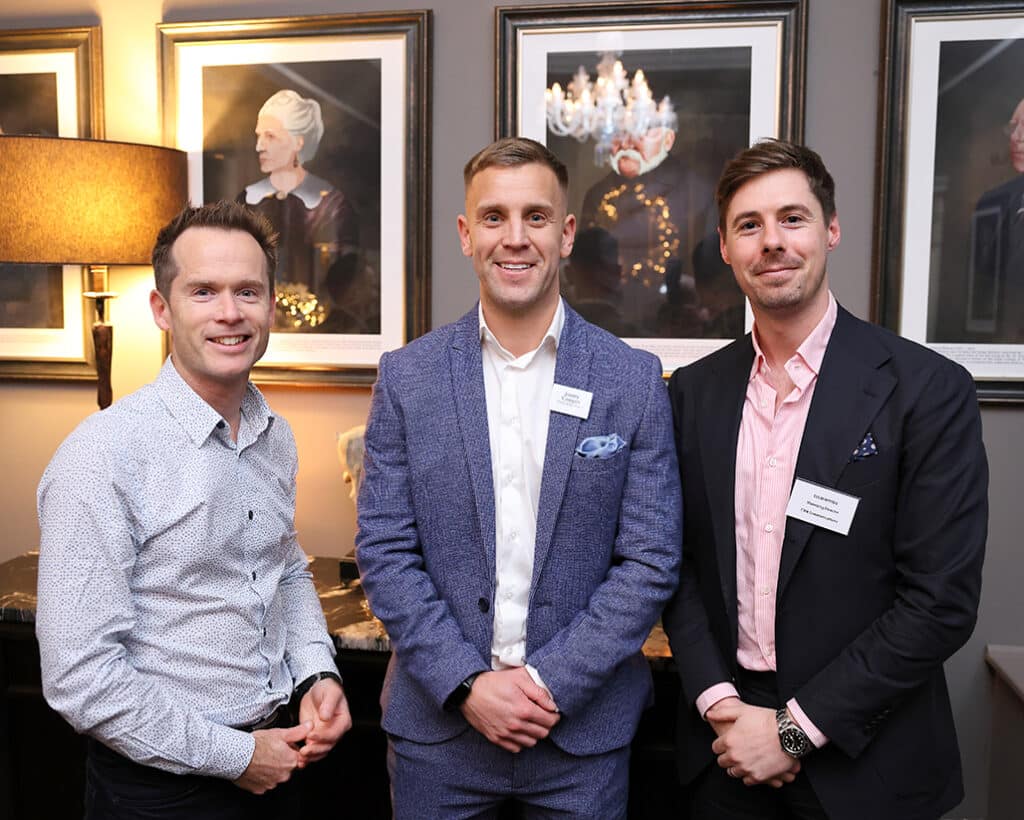
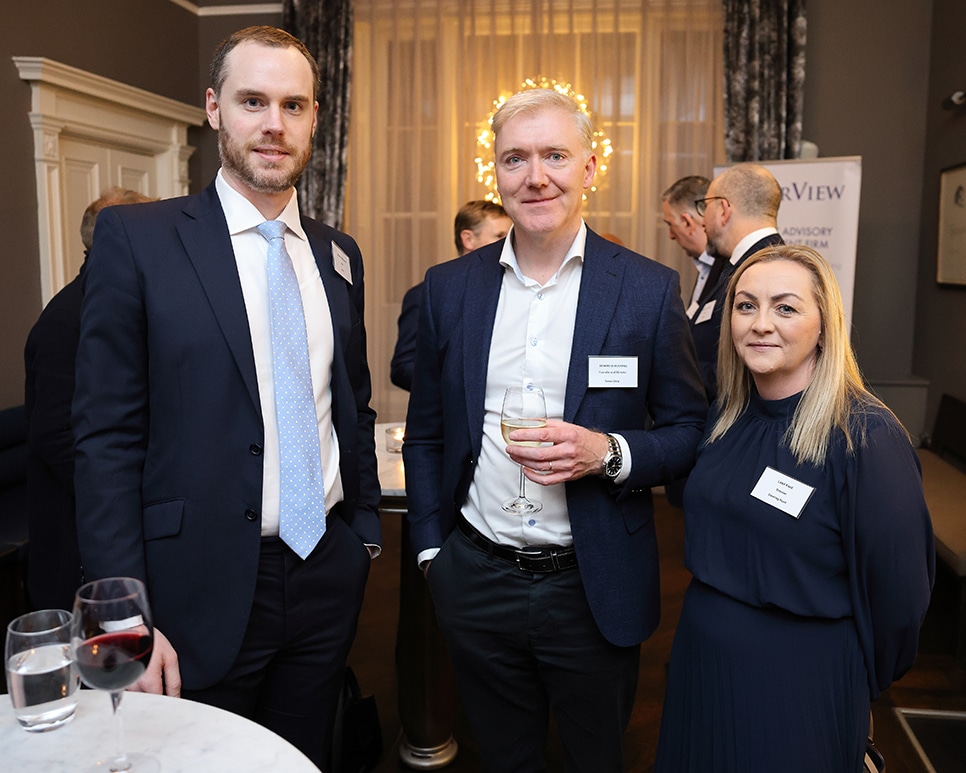
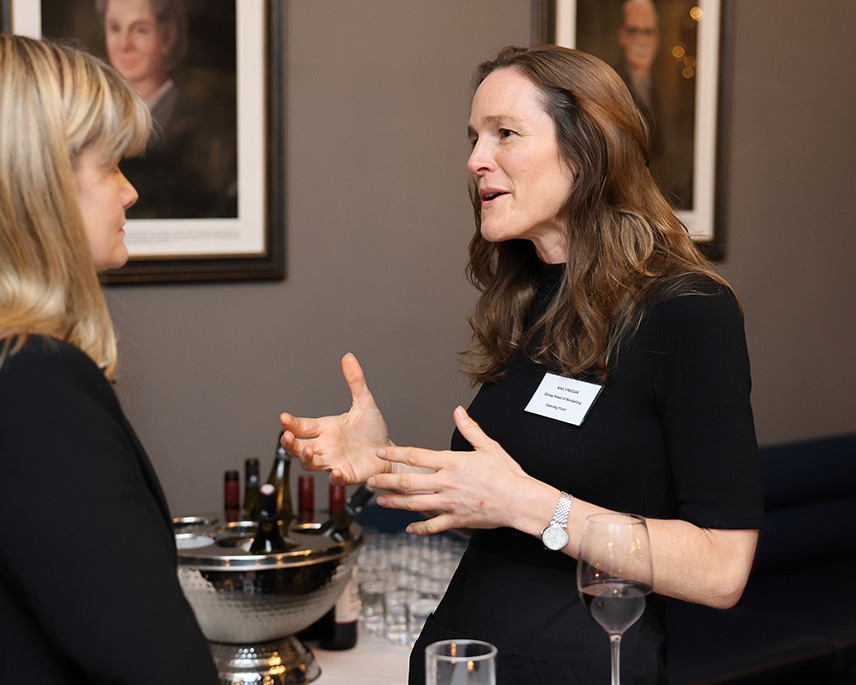




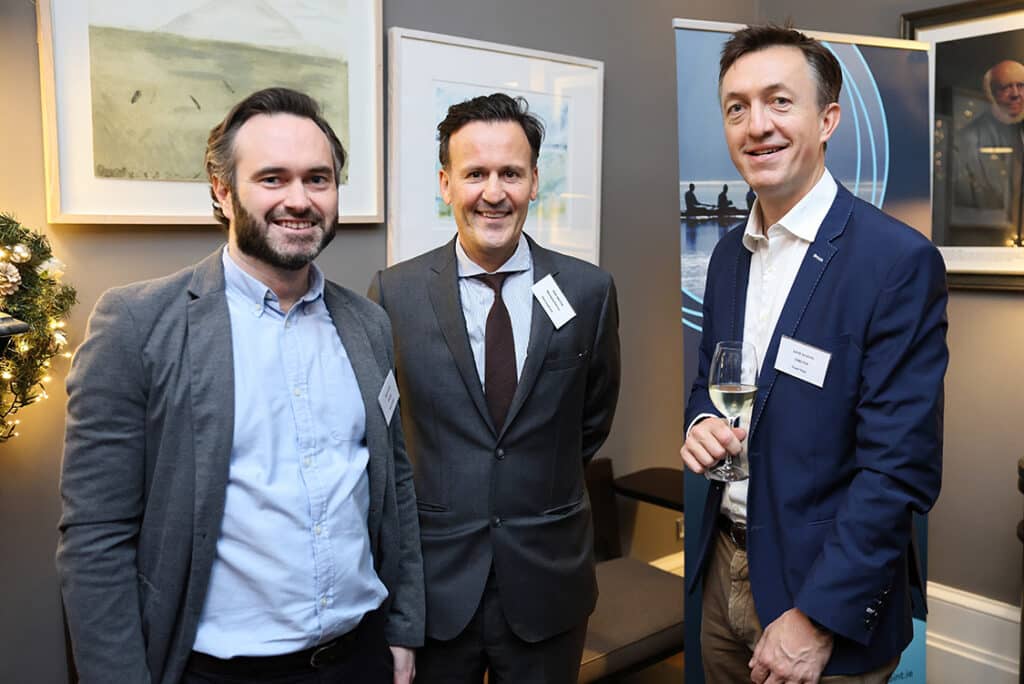
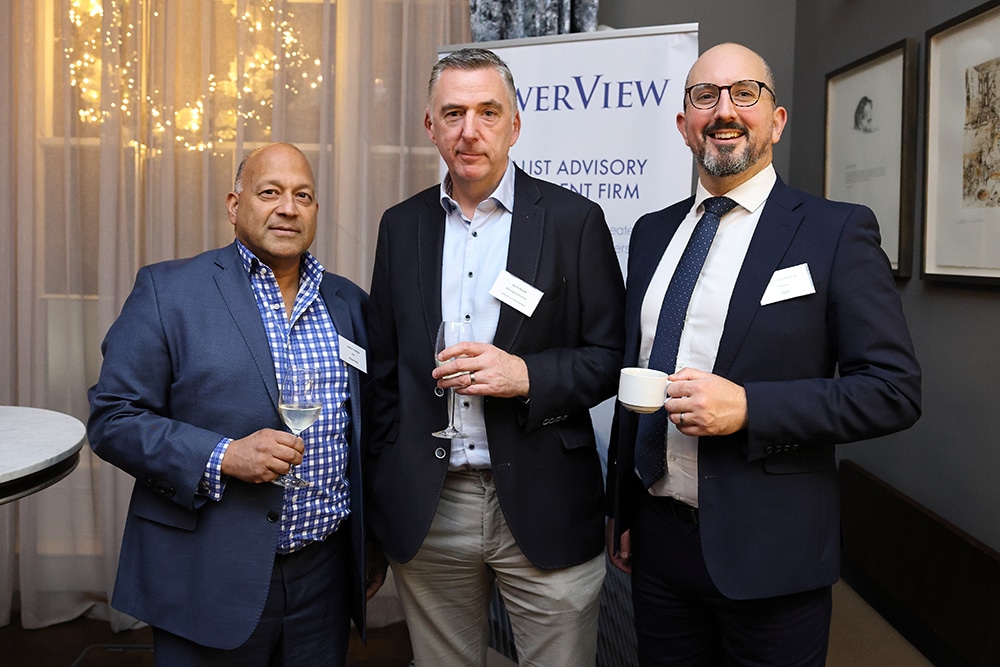
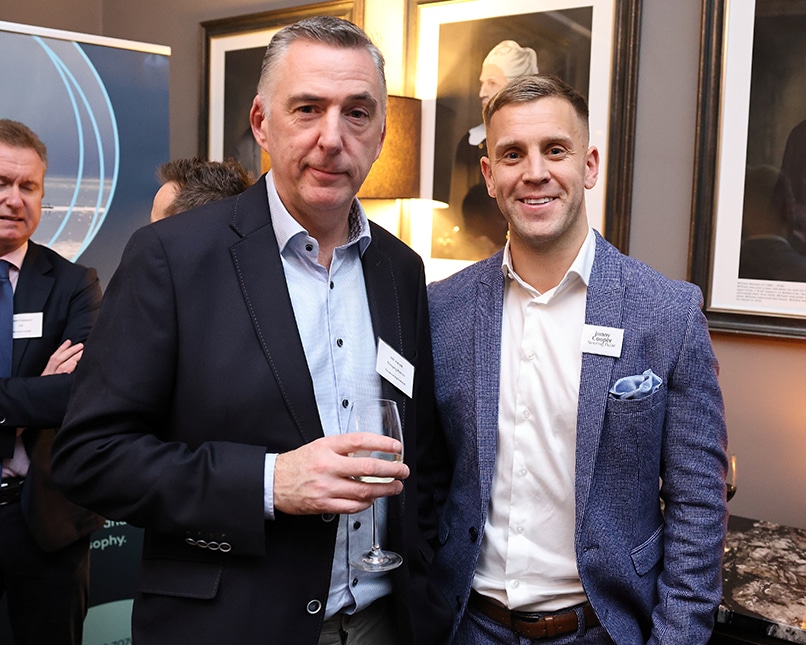
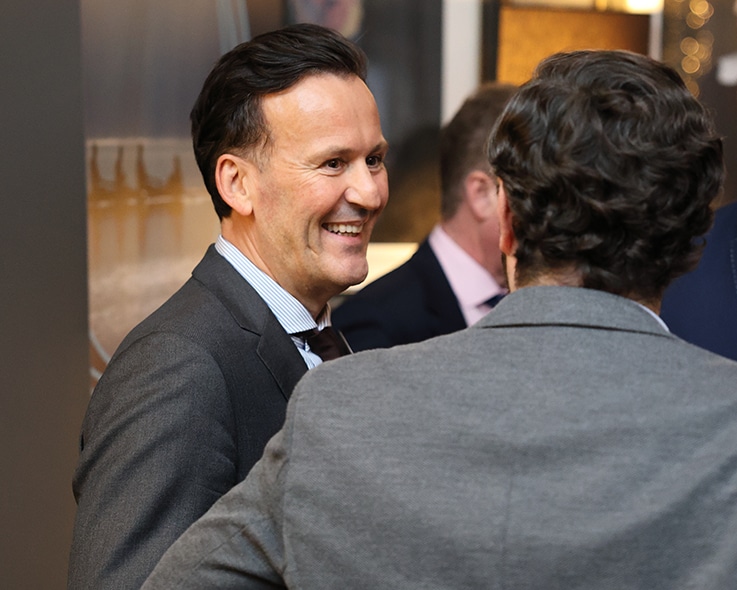
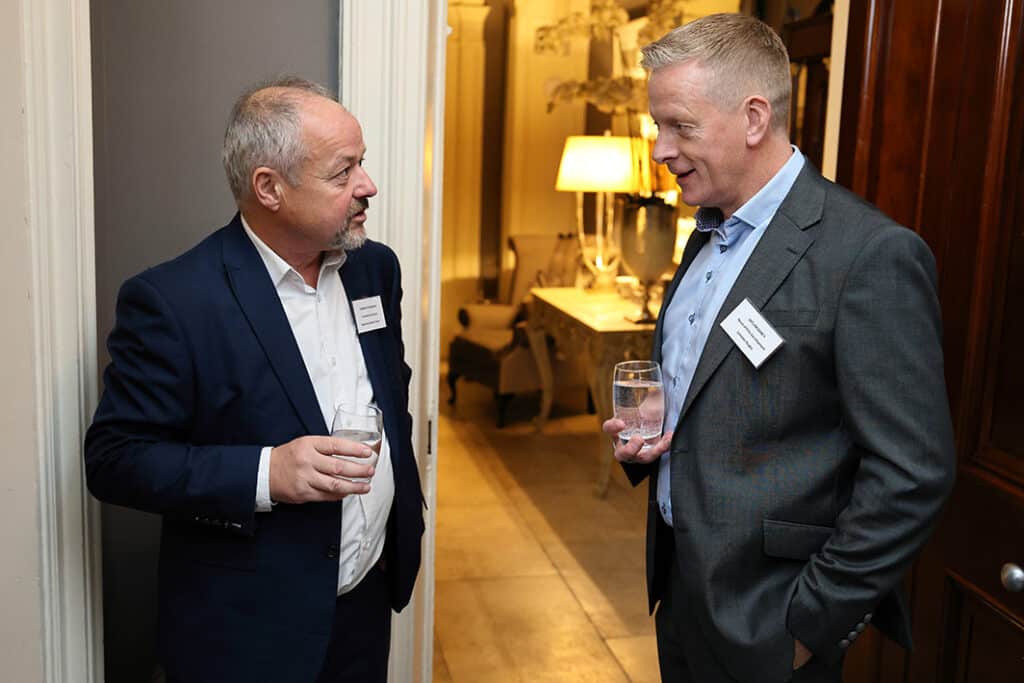

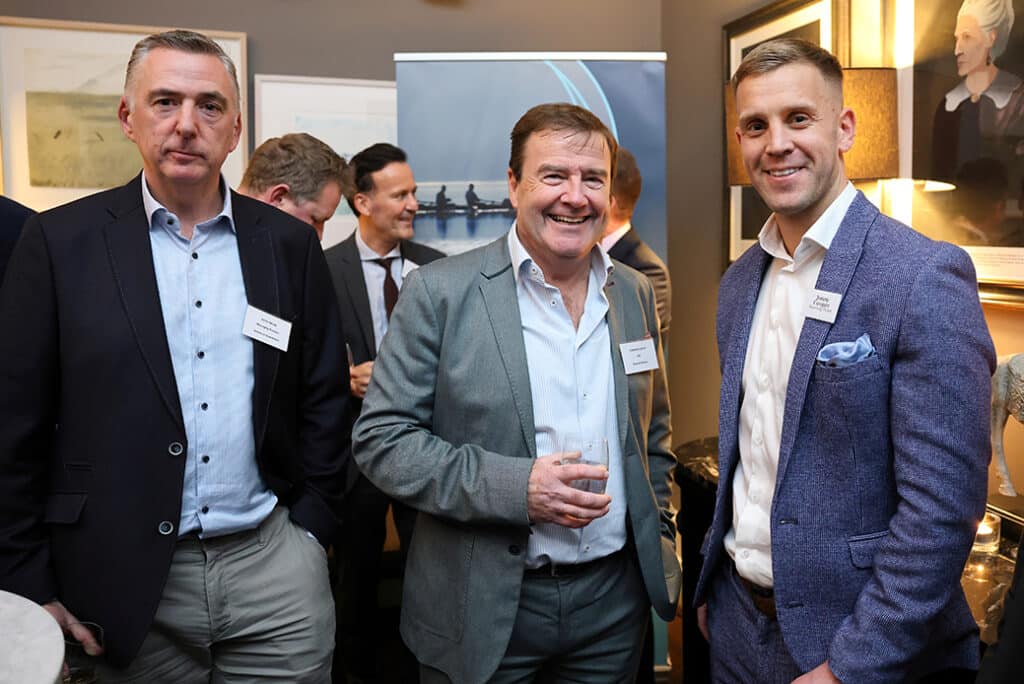
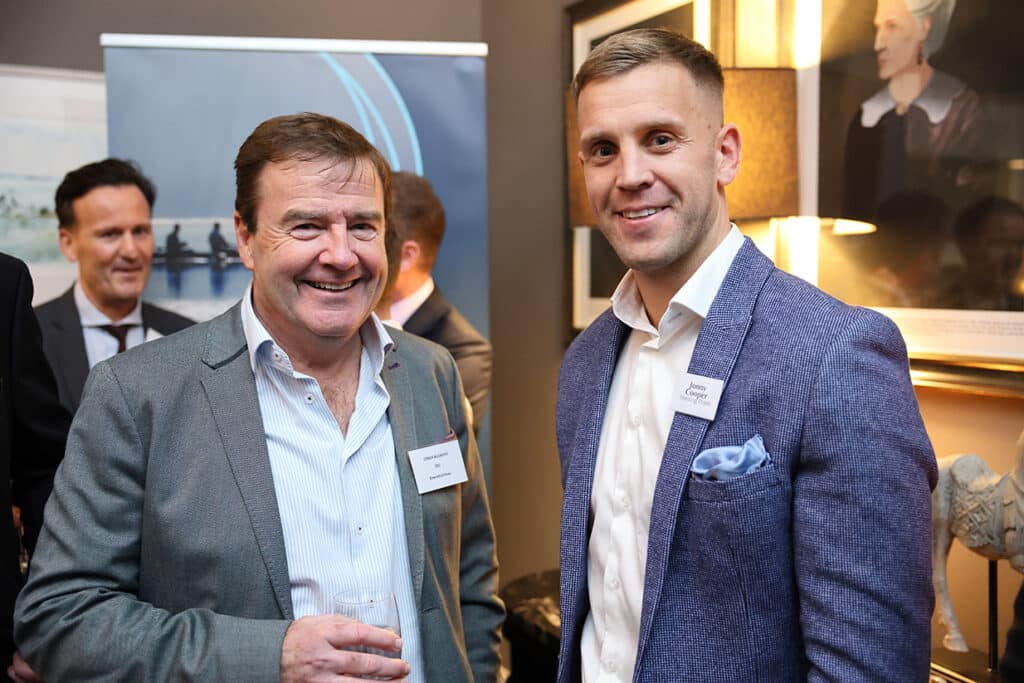

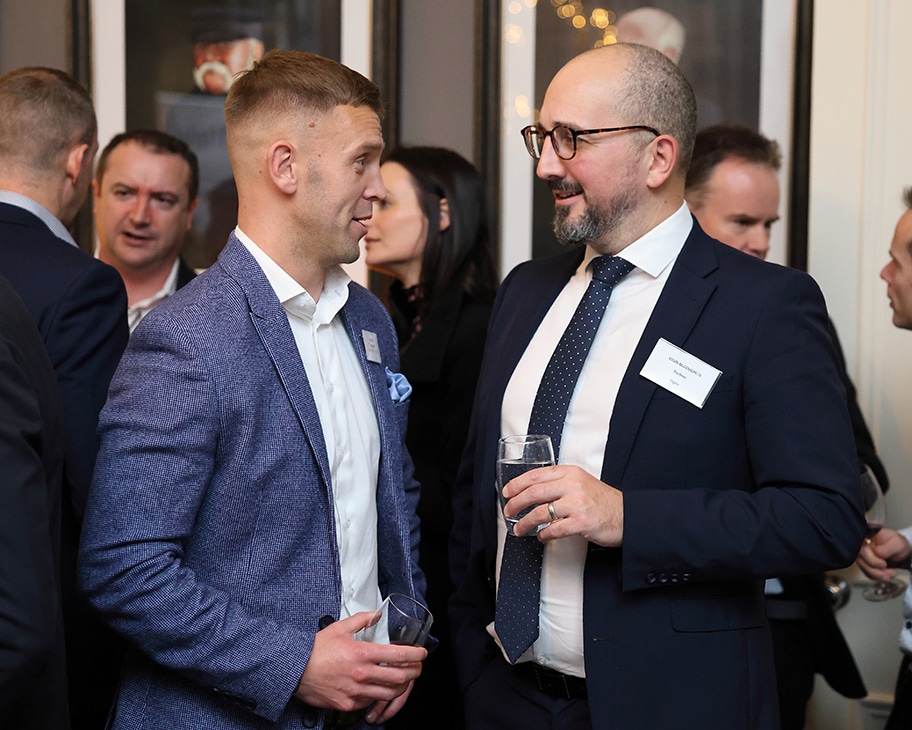
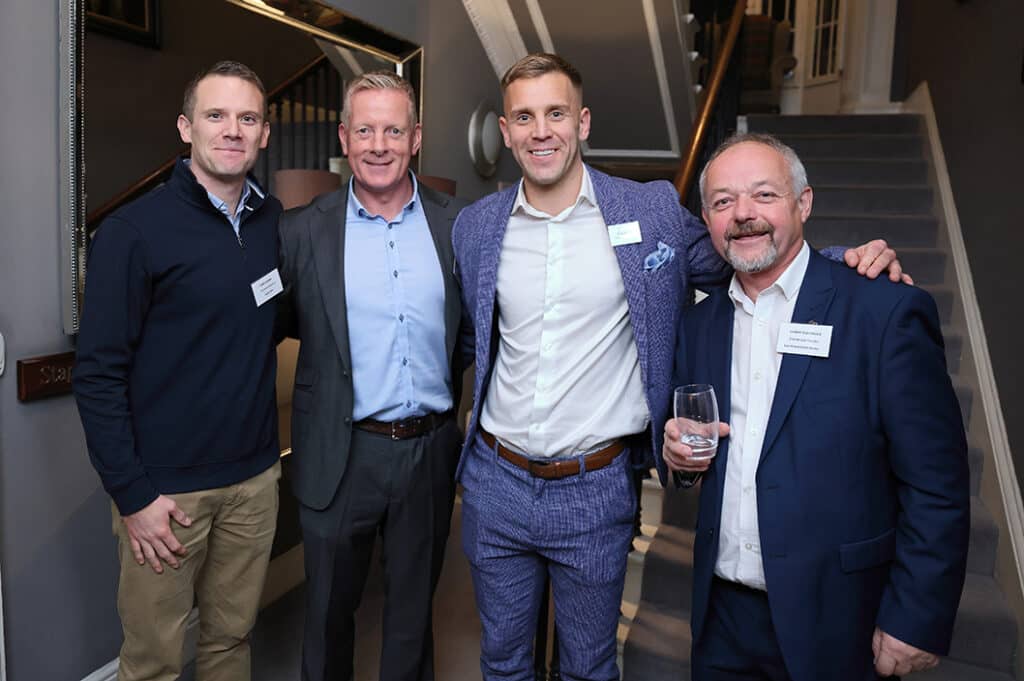
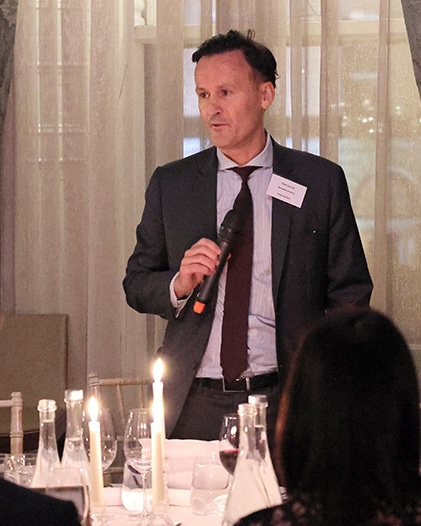
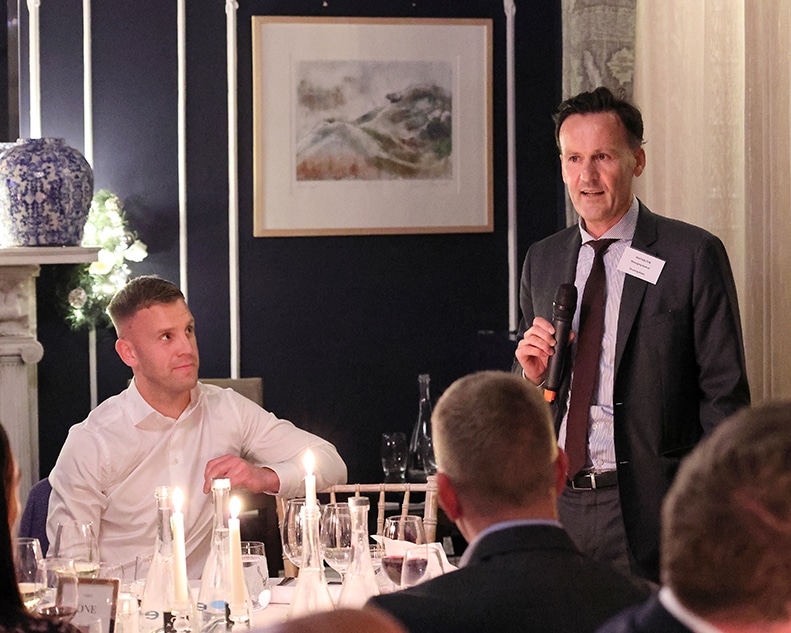

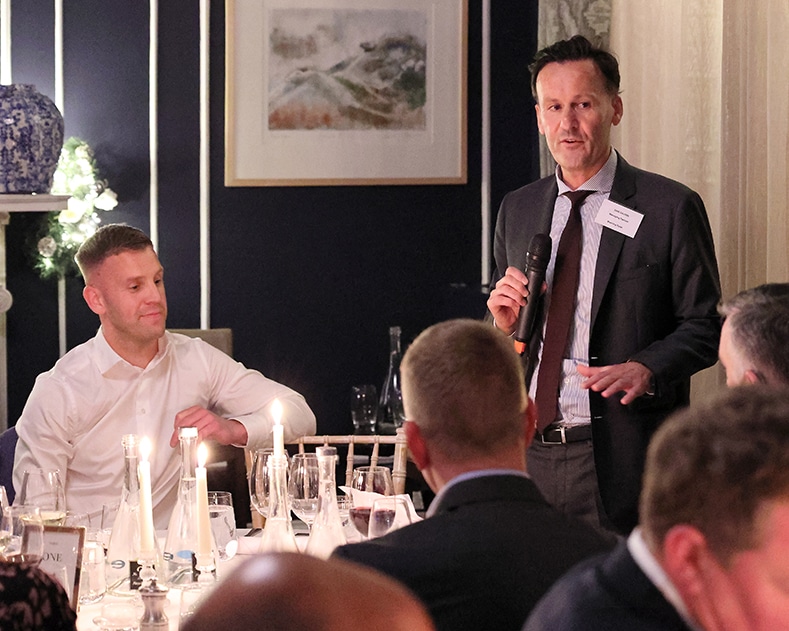
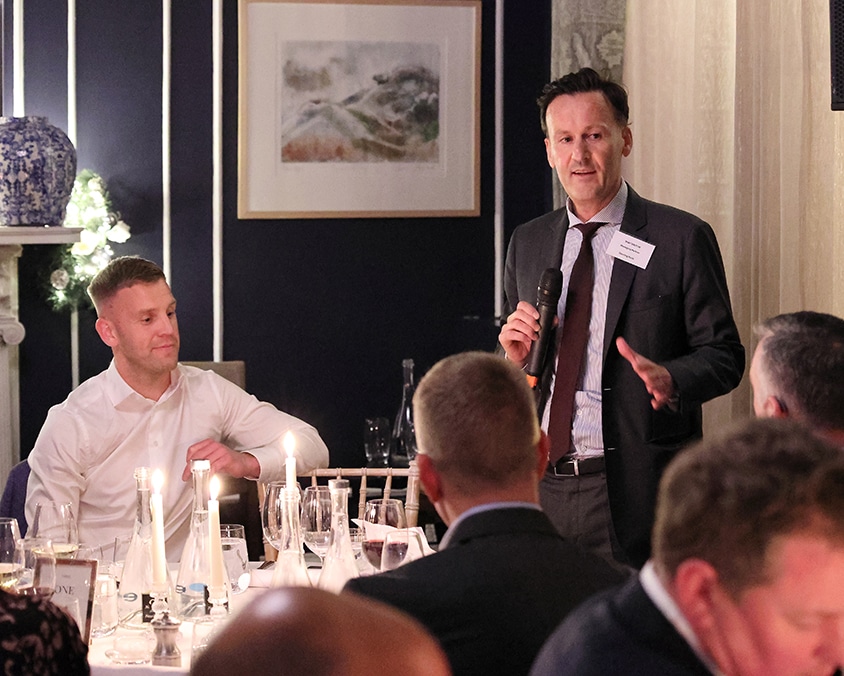
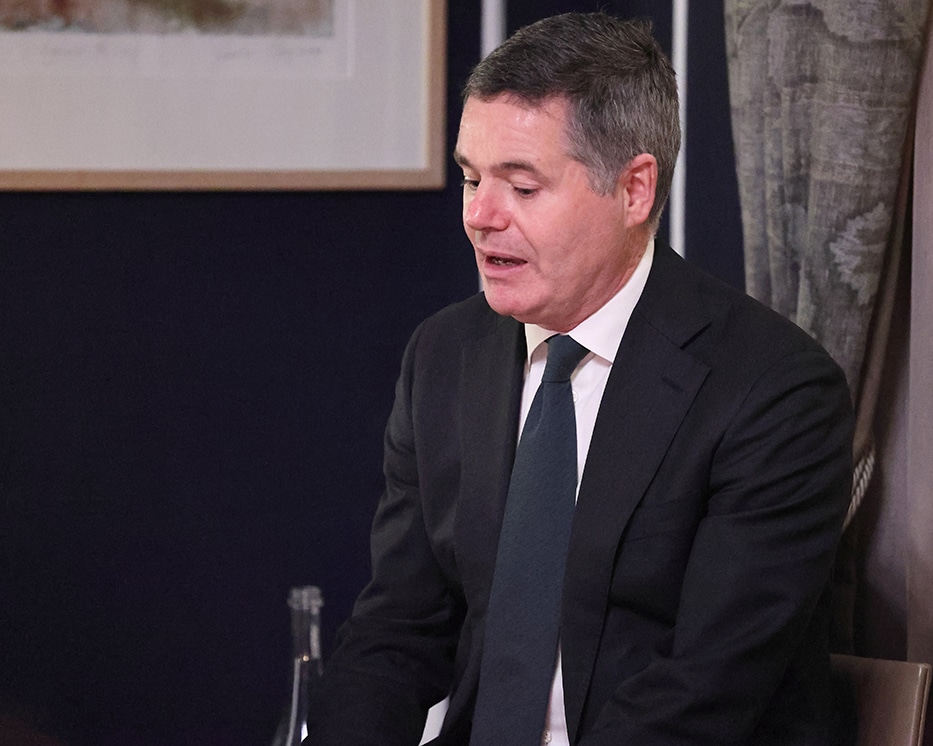
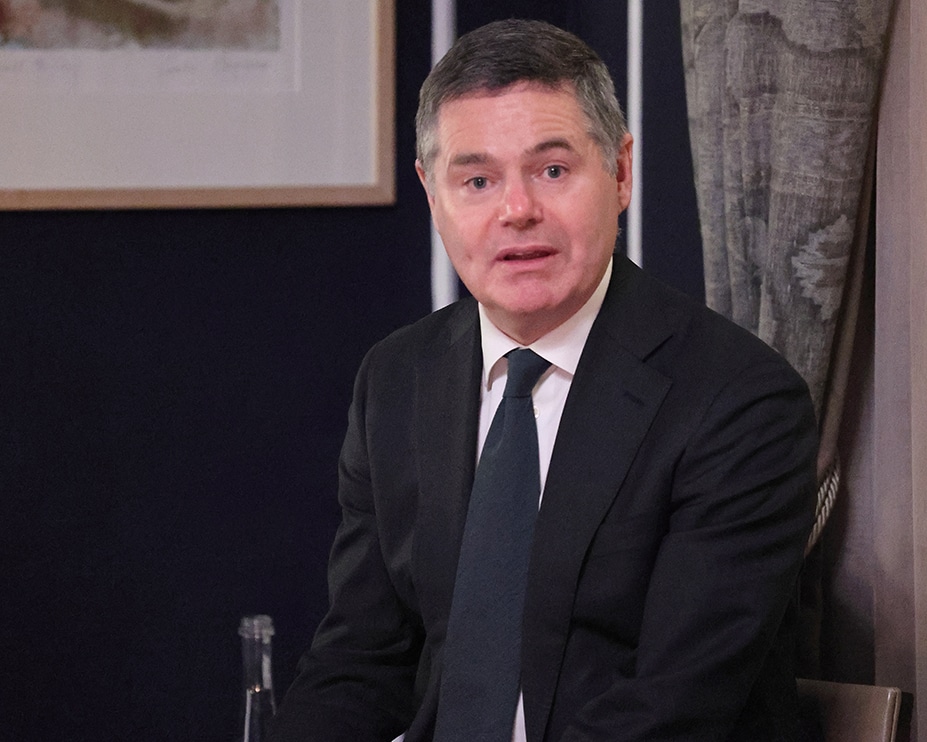
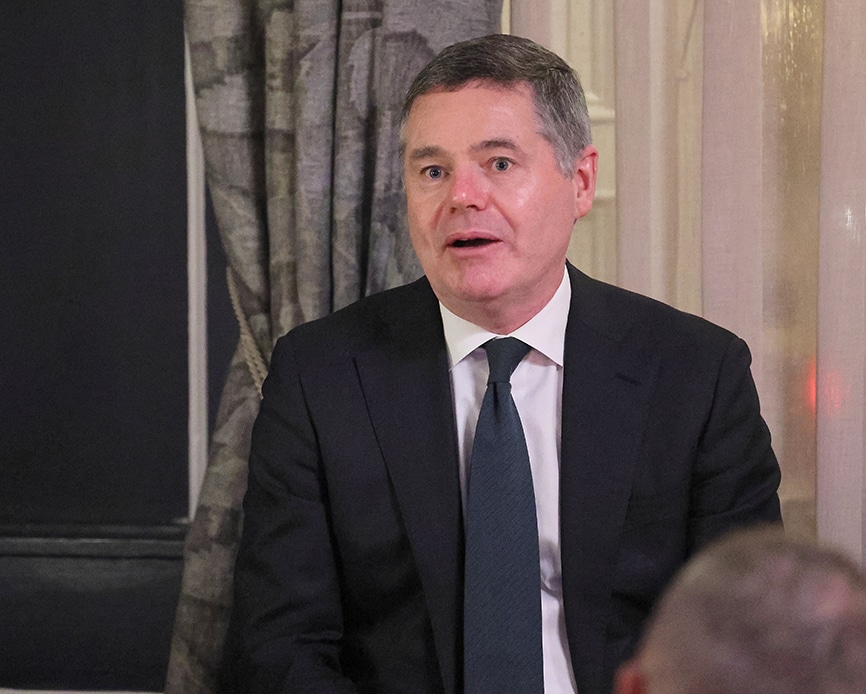
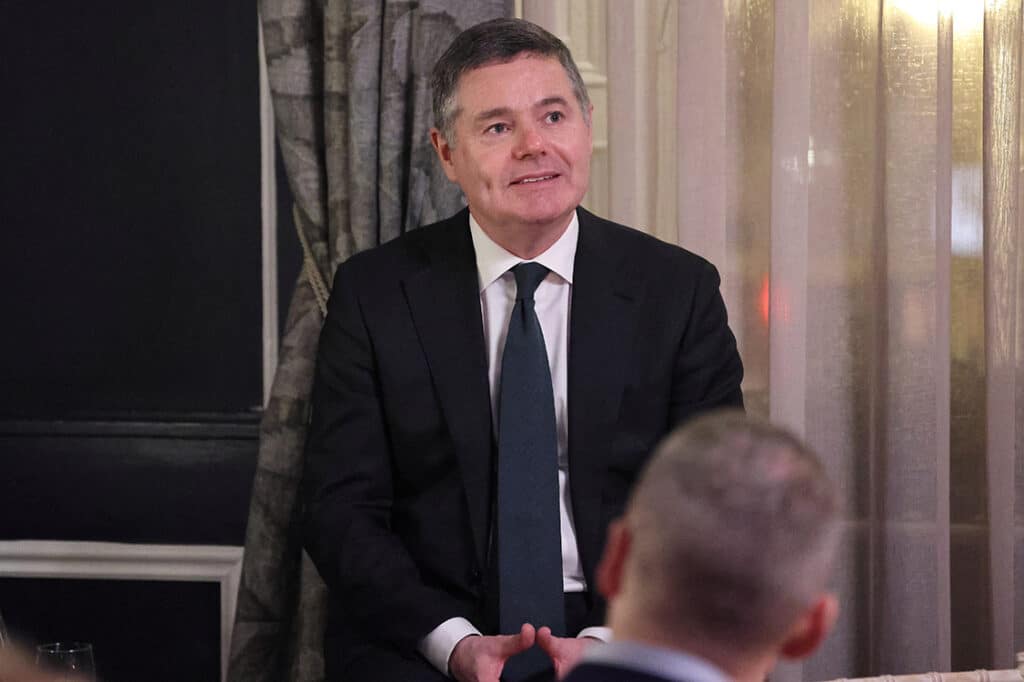

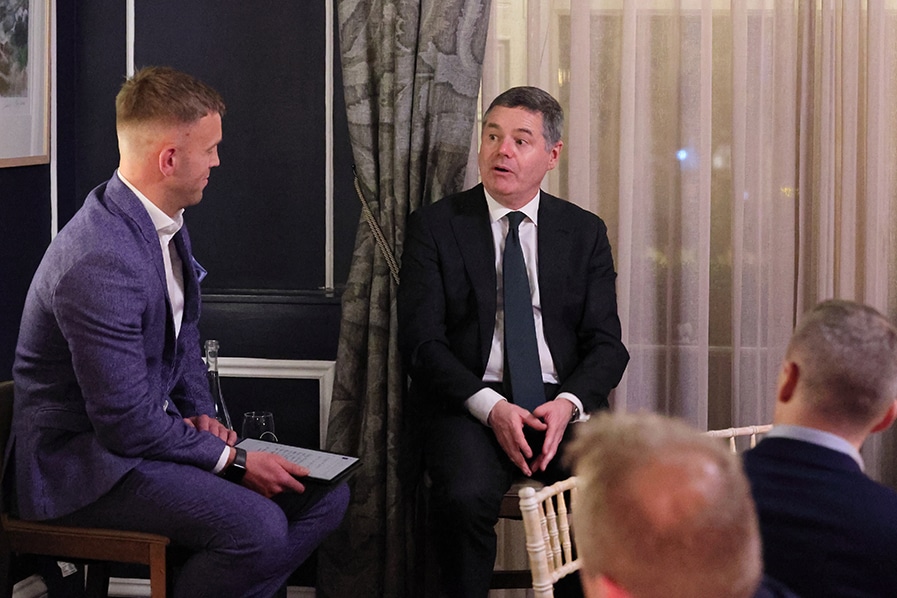

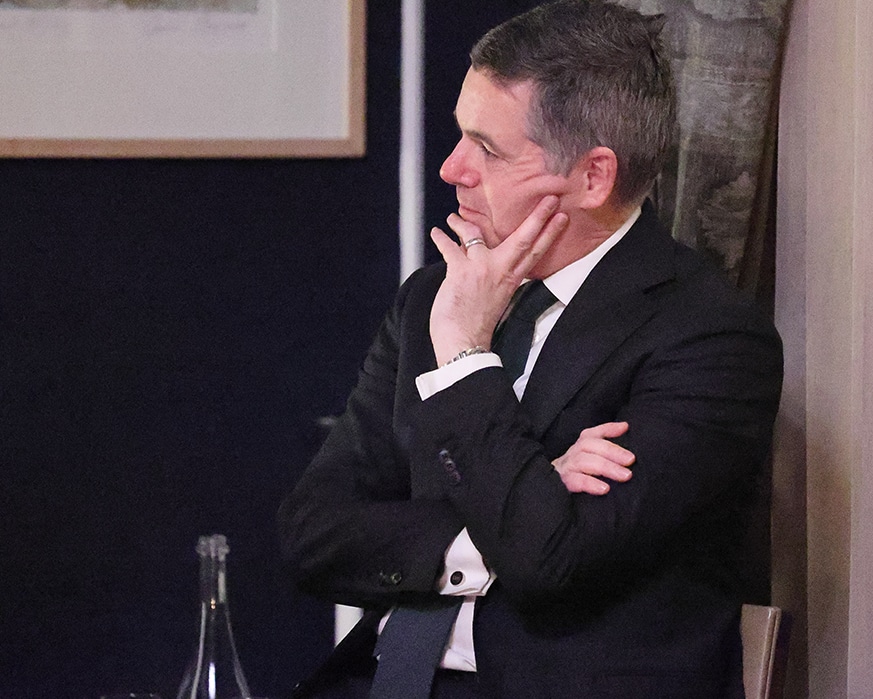
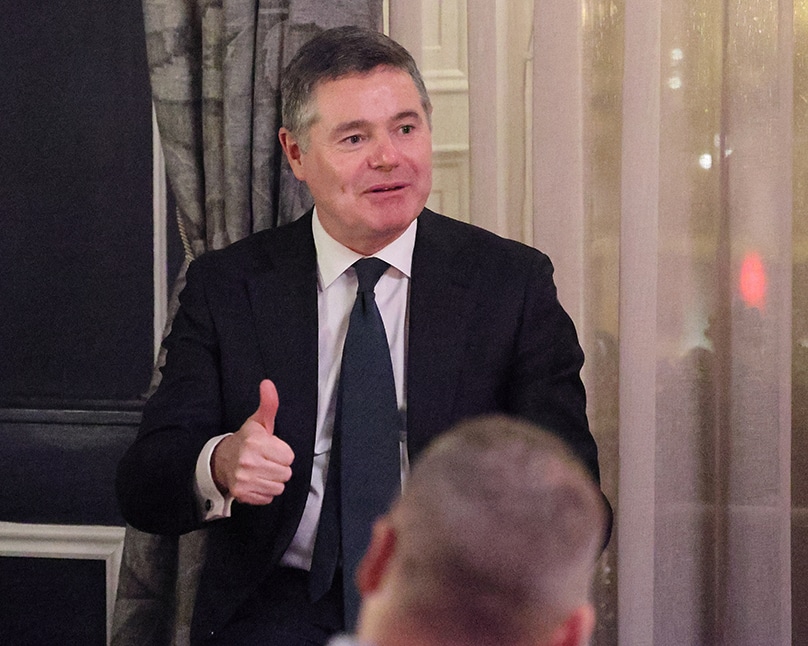
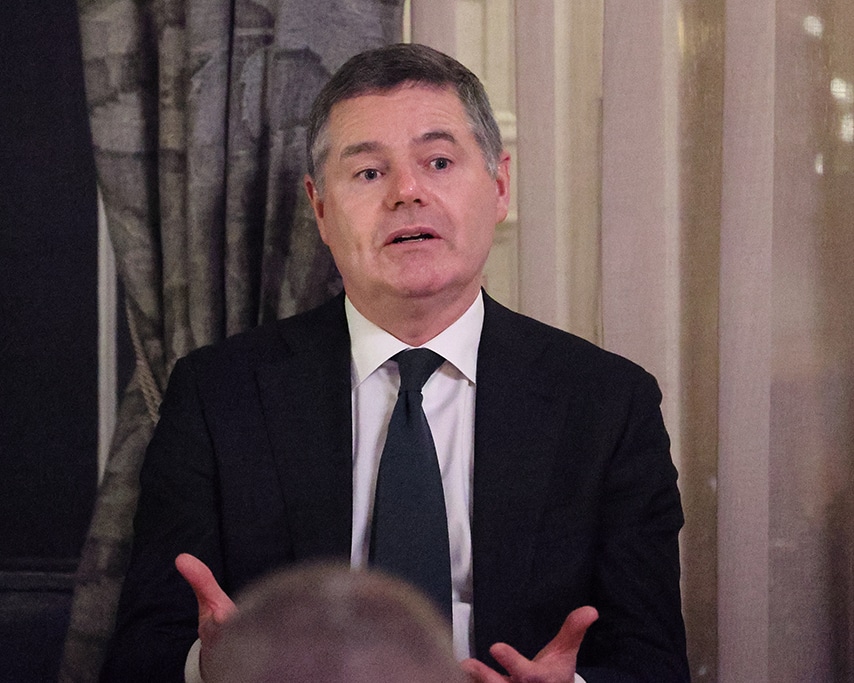
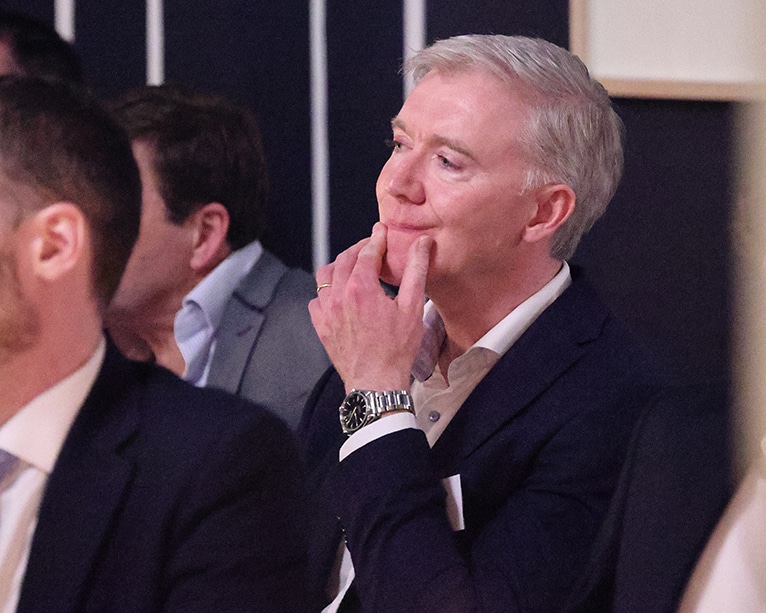
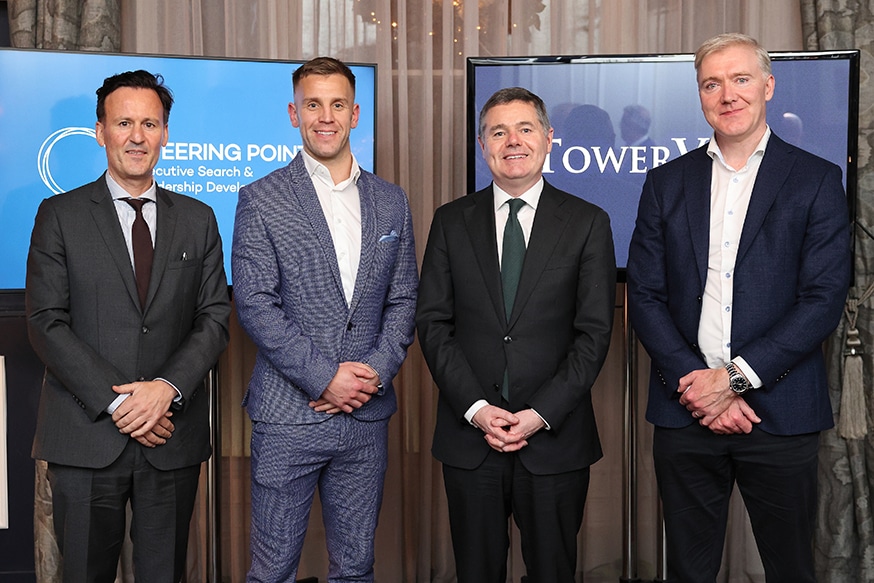
For media inquiries or to request high resolution photography from the evening contact Steering Point Group Head of Marketing Gail Finegan, gfinegan@steeringpoint.ie.

Introduction
Sometimes, even the most passionate and dedicated individuals can experience a dip in motivation and passion for their work or career. If you find yourself in this situation, you’re not alone. The good news is that there are ways to rekindle your passion and reignite your drive to excel. In this post, we’ll explore some psychological theories of motivation and social psychology concepts that can provide practical advice for reigniting the spark in your professional life.
Self-Determination Theory
First, let’s delve into the psychological theories of motivation. One such theory is the Self-Determination Theory (SDT) by Deci and Ryan (1985), which focuses on the concepts of autonomy, competence, and relatedness. According to SDT, people are more likely to be motivated when they feel a sense of control over their actions, believe they can succeed, and feel connected to others. To apply this theory to your work life, consider seeking opportunities for autonomy, setting achievable goals, and fostering positive relationships with colleagues.
Maslow’s Hierarchy of Needs
Another relevant psychological theory is Maslow’s Hierarchy of Needs (1943), which posits that people are motivated by fulfilling their basic needs before moving on to higher-order needs, such as self-esteem and self-actualisation. To rekindle your passion, examine whether your basic needs are being met at work, such as having a safe environment, job security, and social connections. If not, address these areas first to create a solid foundation for reigniting your passion.
Social identity theory
Turning to social psychology, the concept of social identity theory (Tajfel & Turner, 1986) suggests that individuals derive a sense of self-worth and belonging from their group memberships. In the context of work, identifying with your organisation or team can contribute to increased motivation and passion. To foster this sense of belonging, engage in team-building activities, share your organisation’s mission and values, and celebrate your team’s achievements.
Reigniting your passion
Now that we’ve explored some relevant theories let’s discuss practical tips for reigniting your passion at work:
- Reflect on your “why”: Revisit the reasons you initially chose your career or job, and remind yourself of what ignited your passion in the first place. This exercise can help you rediscover your purpose and motivation.
- Seek new challenges: Taking on new responsibilities or learning new skills can reignite your passion by pushing you out of your comfort zone and reigniting your curiosity.
- Connect with inspiring individuals: Surrounding yourself with passionate and motivated people can be contagious. Seek out colleagues, mentors, or role models who inspire and challenge you.
- Set SMART goals: Establish Specific, Measurable, Achievable, Relevant, and Time-bound goals that align with your values and interests, and celebrate your progress along the way.
- Practice self-care: Prioritise your mental and physical well-being by setting boundaries, managing stress, and engaging in activities that bring you joy.
- Cultivate gratitude: Regularly reflecting on your accomplishments and expressing gratitude for your job can help shift your focus from negative aspects to positive aspects of your work.
Conclusion
In conclusion, reigniting your passion for work or your career requires a combination of understanding the underlying psychological and social factors and implementing practical strategies. By drawing on the theories of motivation and social psychology, you can create a more fulfilling and passionate work life that drives you to excel.
More on Motivation
The Workplace Motivation Theory That Works
Organisational Psychology and Motivation
Emotional Intelligence and Engaging Others
References
Deci, E. L., & Ryan, R. M. (2000). The “what” and “why” of goal pursuits: Human needs and the self-determination of behaviour. Psychological Inquiry, 11(4), 227-268.
Dweck, C. S. (2008). Mindset: The new psychology of success. Random House Digital, Inc.
Maslow, A. H. (1943). A theory of human motivation. Psychological Review, 50(4), 370-396.
Pink, D. H. (2009). Drive: The surprising truth about what motivates us. Riverhead Books.
Seligman, M. E. P. (2002). Authentic happiness: Using the new positive psychology to realise your potential for lasting fulfilment. Free Press.
Tajfel, H., & Turner, J. C. (1979). An integrative theory of intergroup conflict. In W. G. Austin & S. Worchel (Eds.), The social psychology of intergroup relations (pp. 33-47). Brooks/Cole.
Vallerand, R. J., & Houlfort, N. (2003). Passion at work: Toward a new conceptualisation. In
S. W. Gilliland, D. D. Steiner, & D. P. Skarlicki (Eds.), Emerging perspectives on values in organisations (pp. 175-204). Information Age Publishing.
